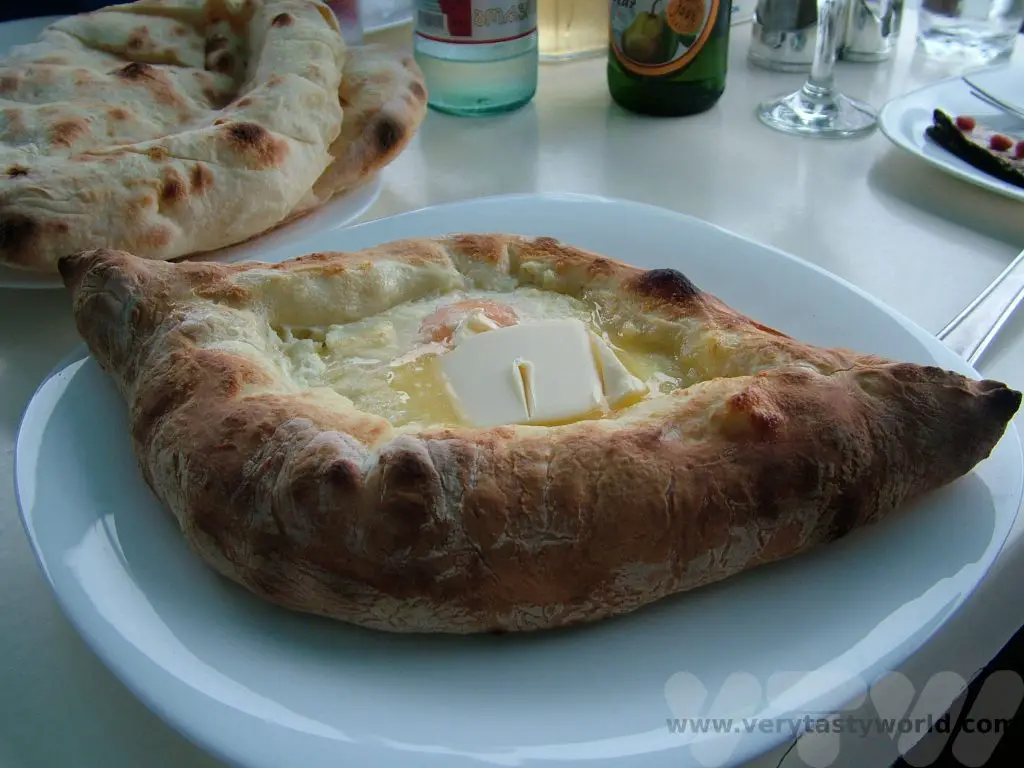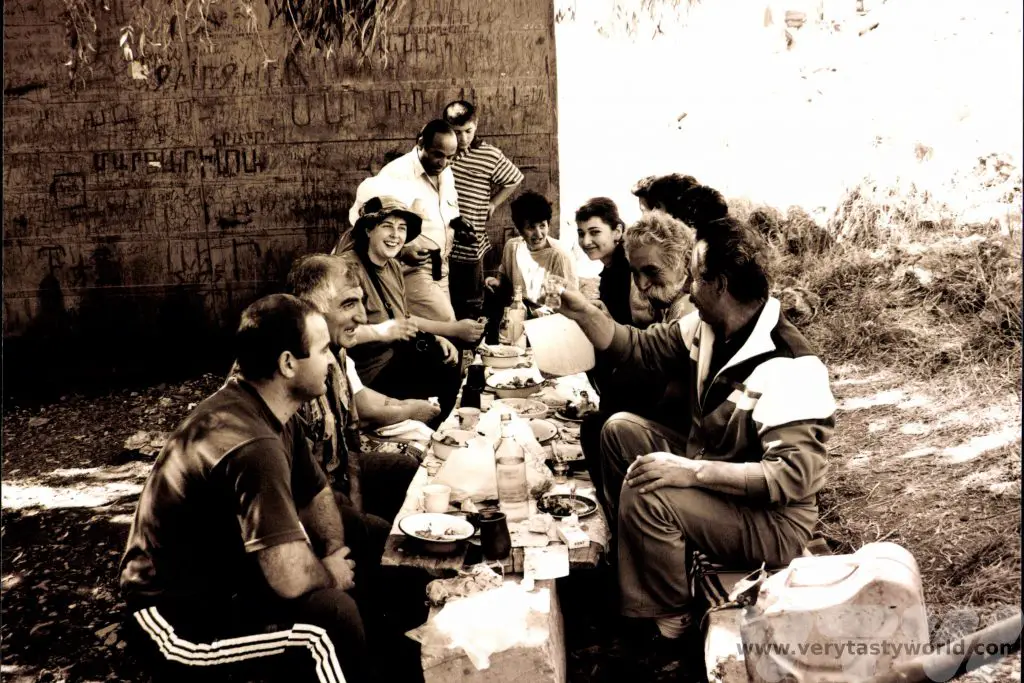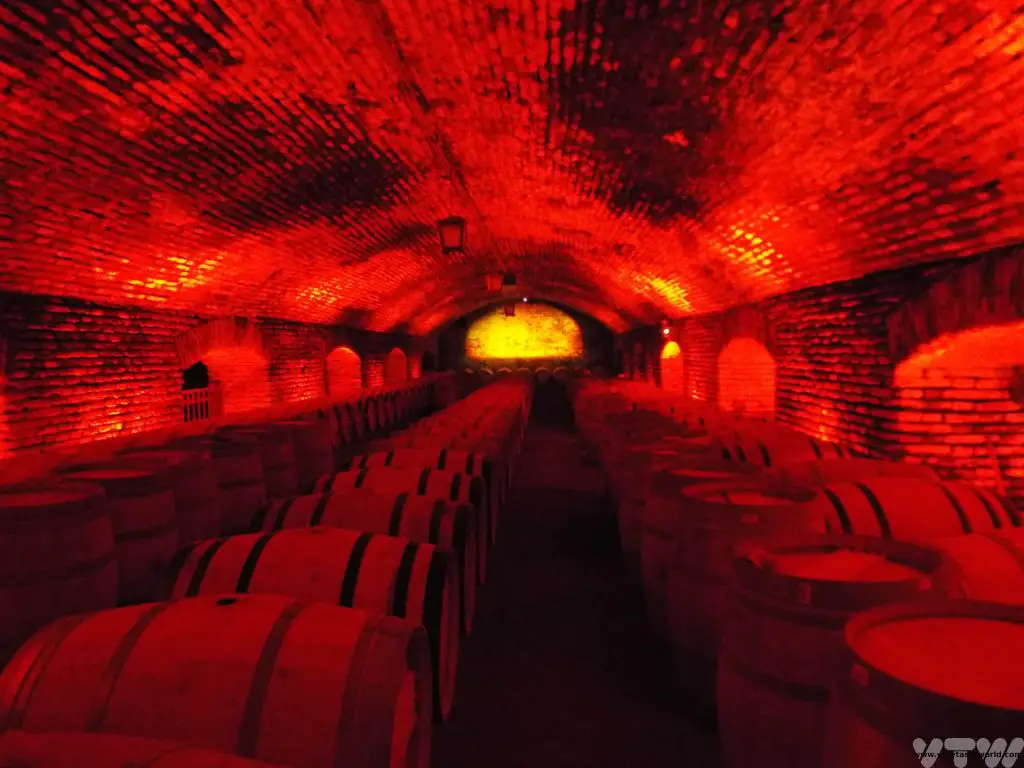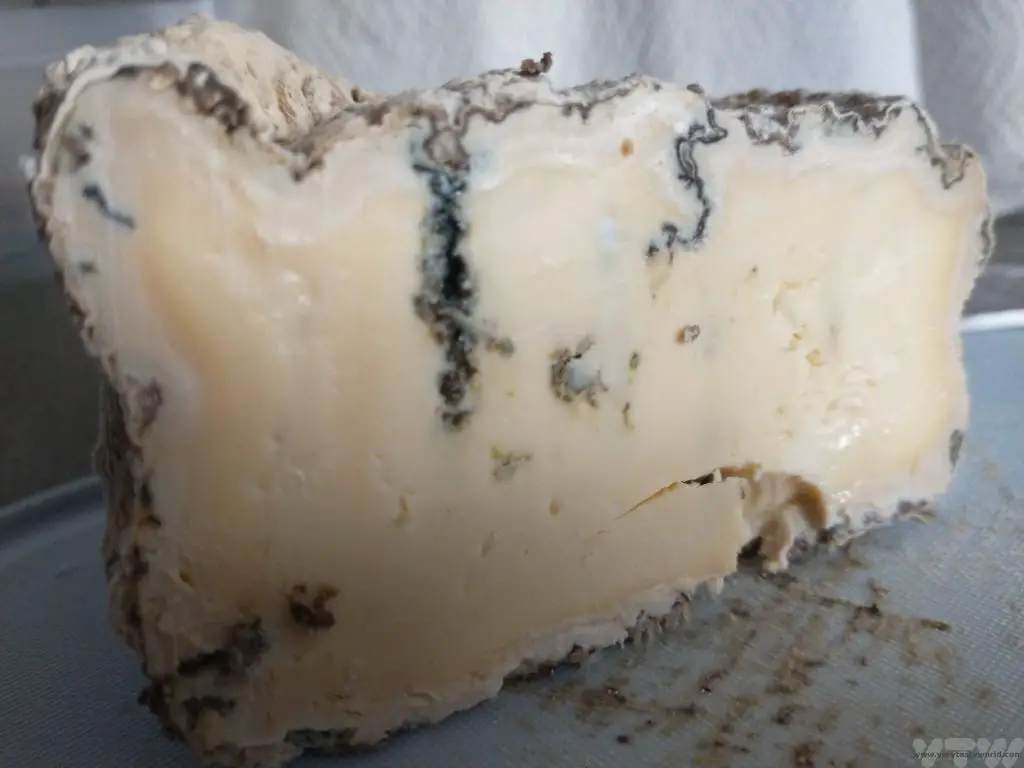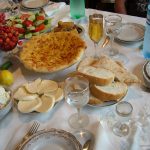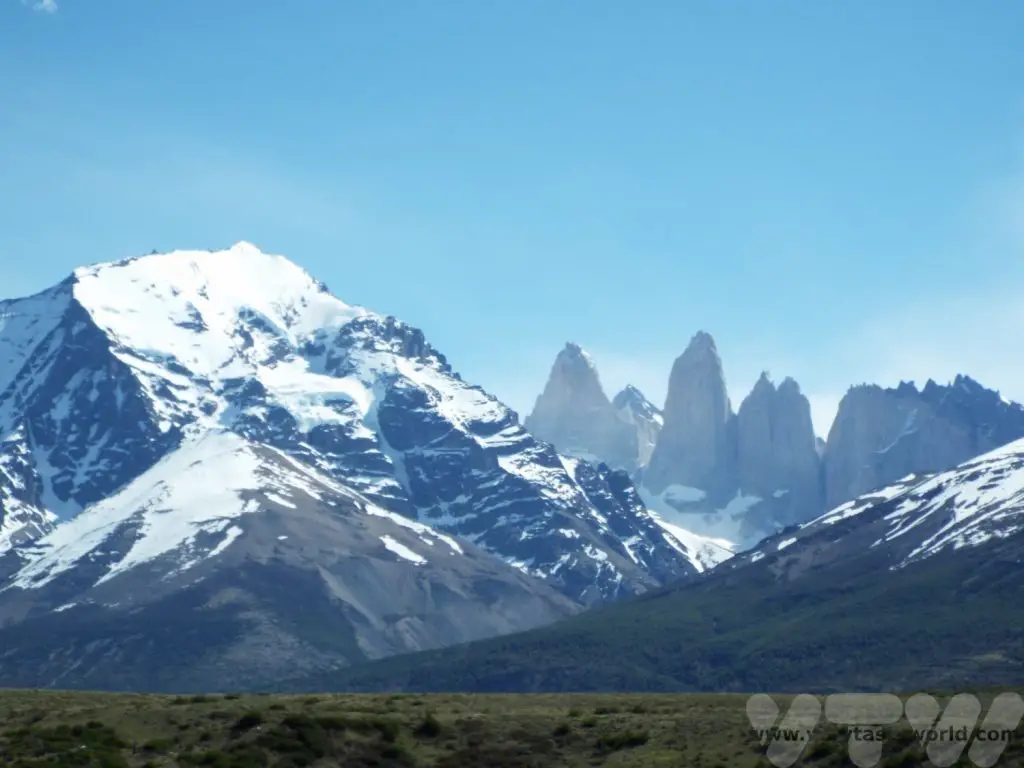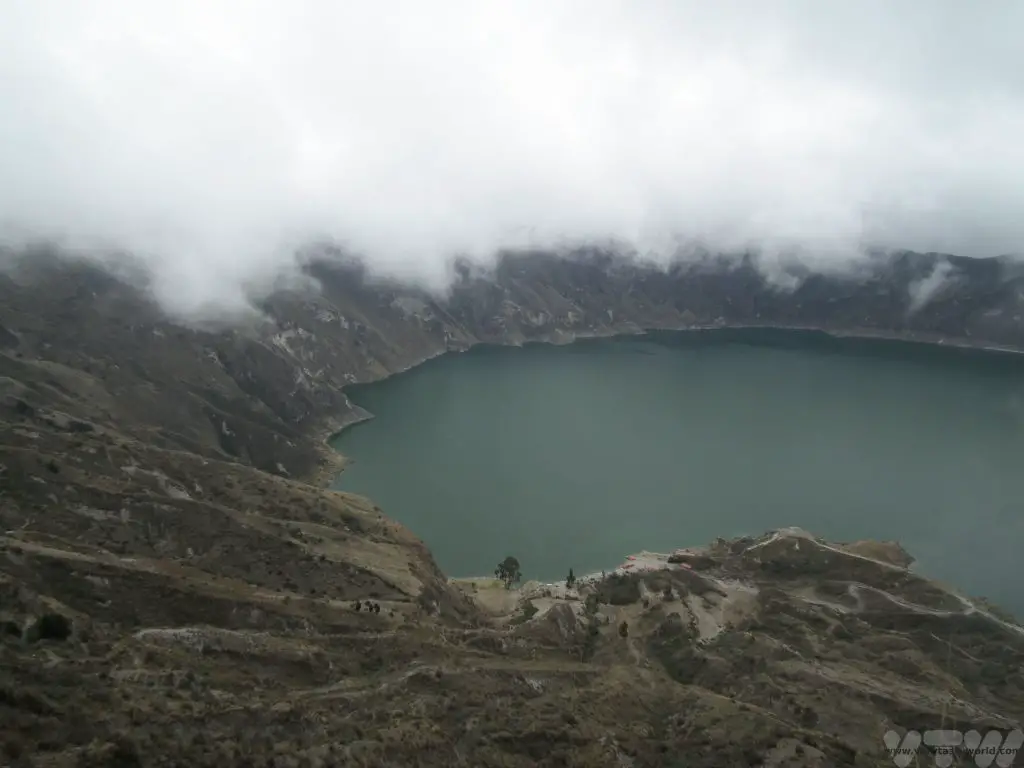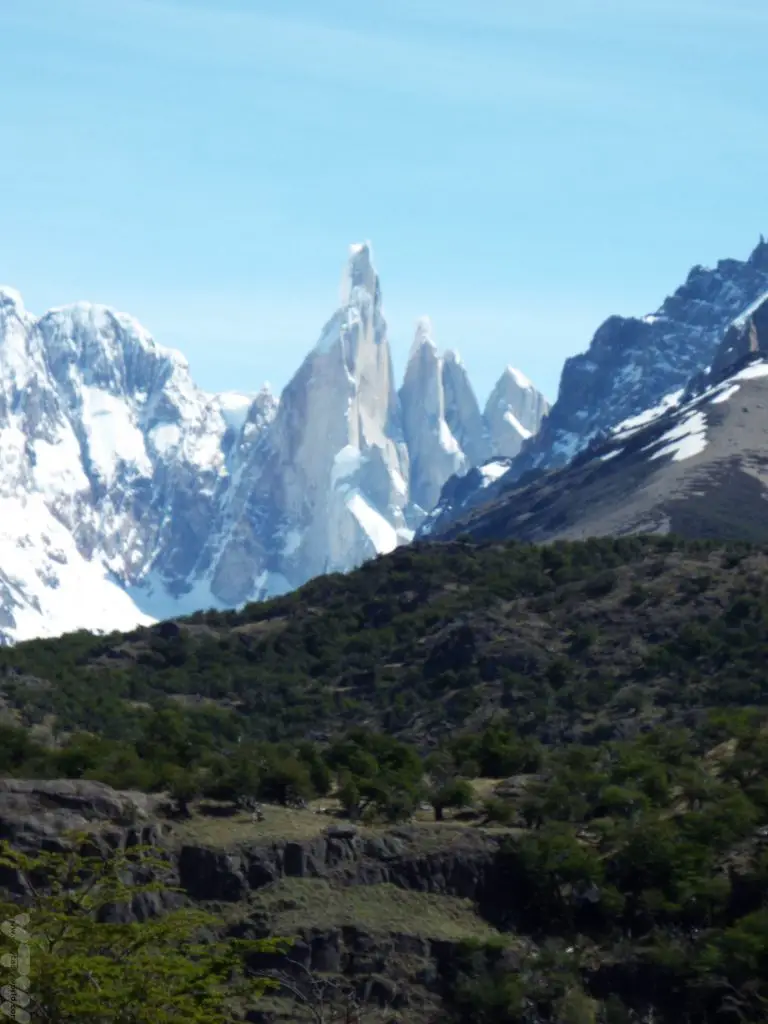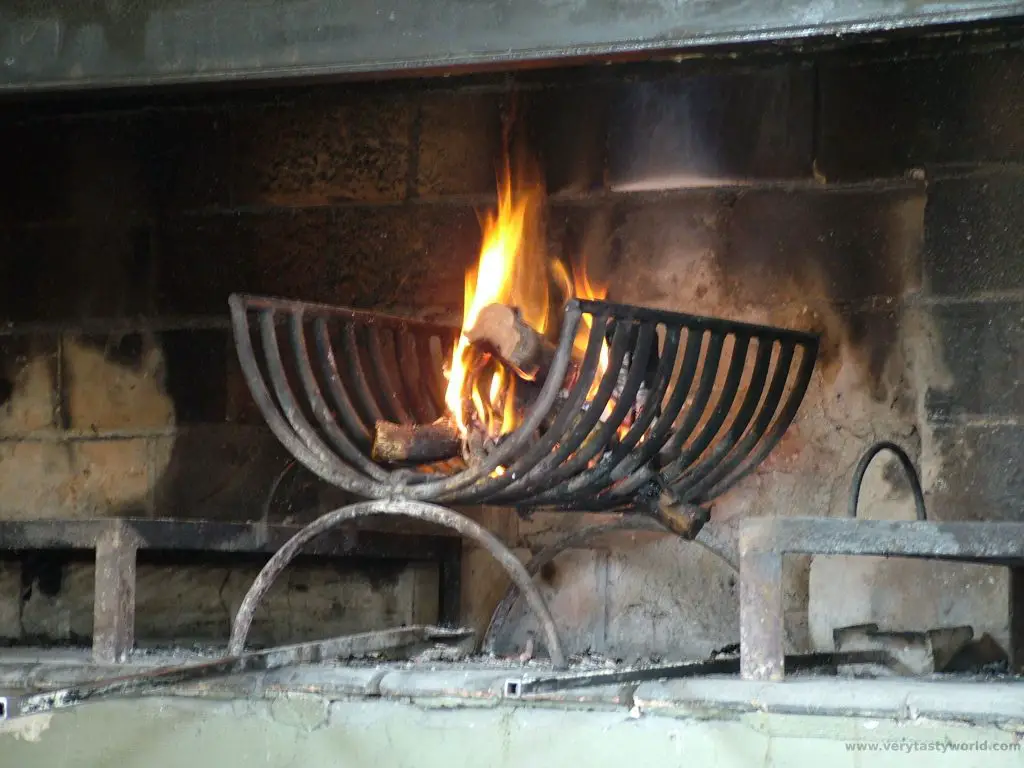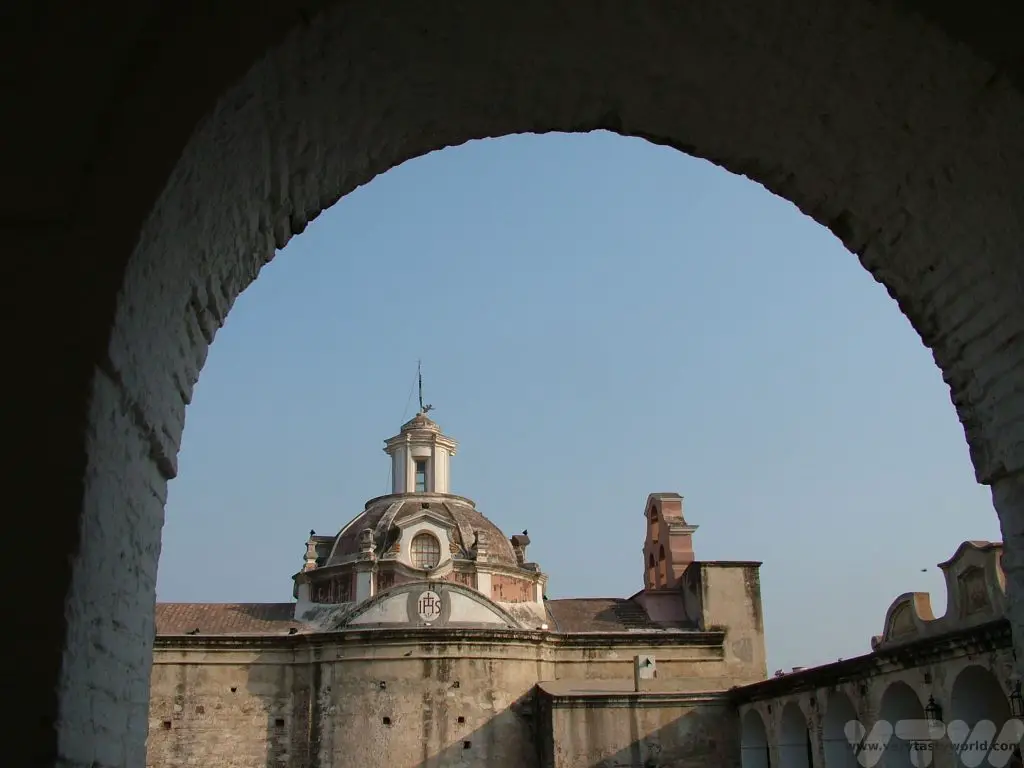Toasting Tradition in Georgia
Cheese and Toasting
There is a legend that when God was handing out land to the nations of the world, the Georgians were so busy feasting that they lost their place in the queue and there was no land left for them. But when they invited God to join the party, he enjoyed himself so much that he gave them the best bits of land that he had been saving for himself. Enjoying good food and wine is an important element of life in this part of the world and the local people have a wonderful toasting tradition in Georgia.
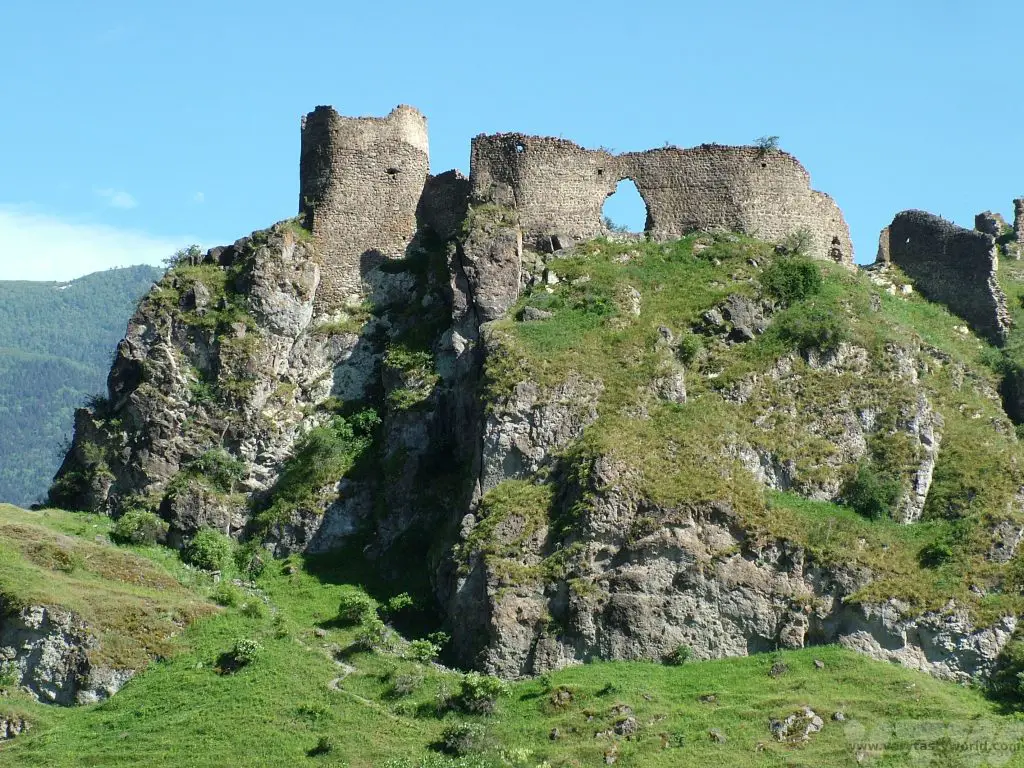
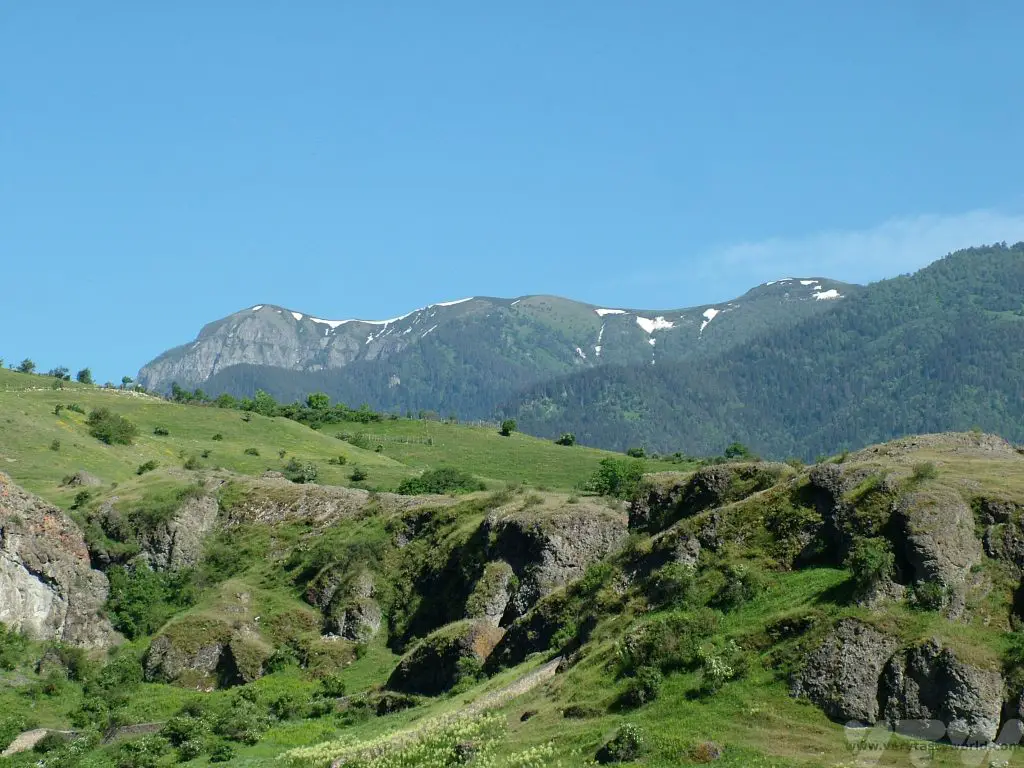
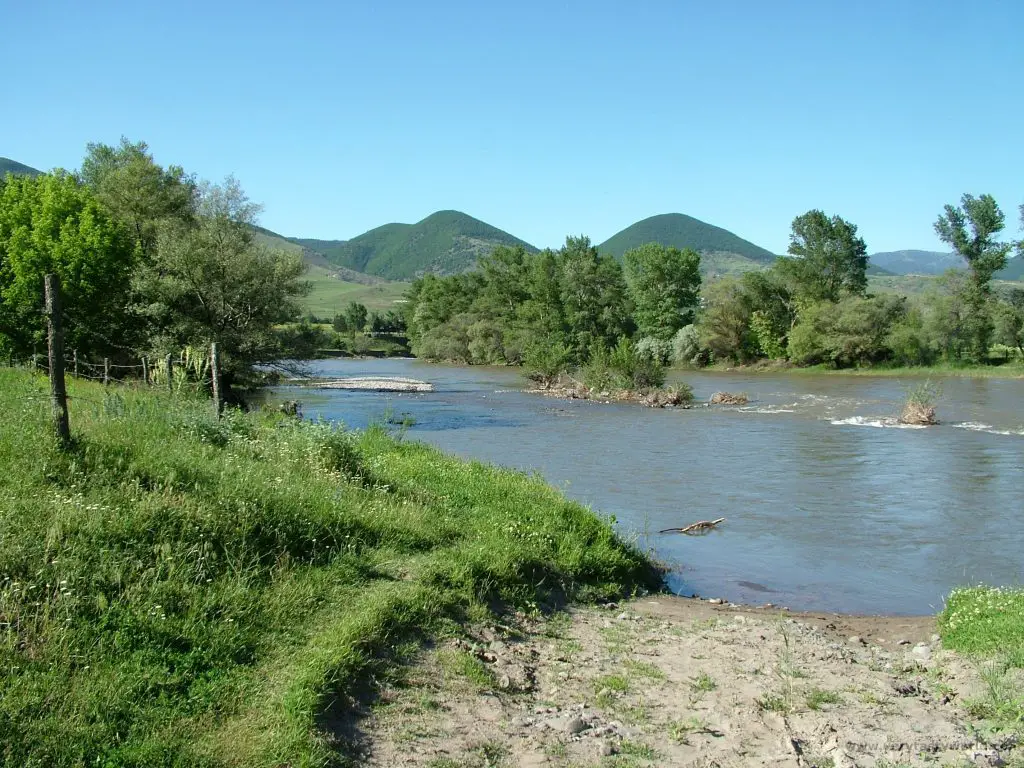
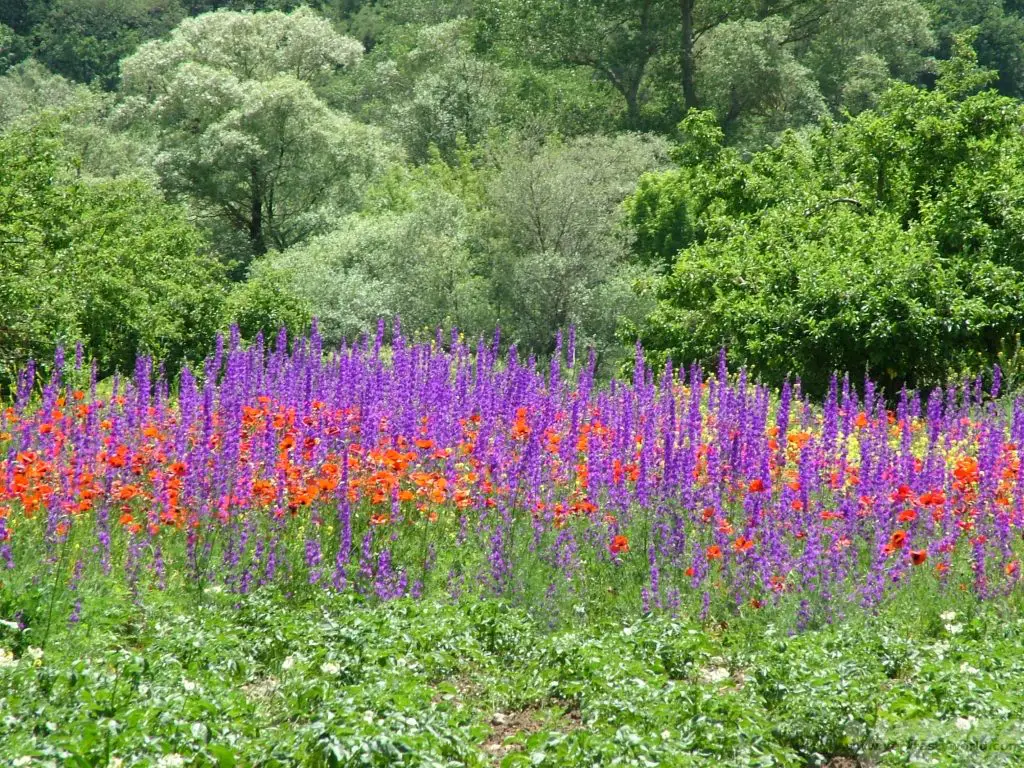
We visited a number of families, ostensibly to see how they produced wine or made cheese, but everywhere we stopped we were greeted by the most amazing hospitality and generosity. Meals would last several hours and involve large quantities of superb fresh food along with overflowing glasses of wine and chacha (grape vodka). Most houses we visited grew their own grapes and made their own wine. Many had a still.
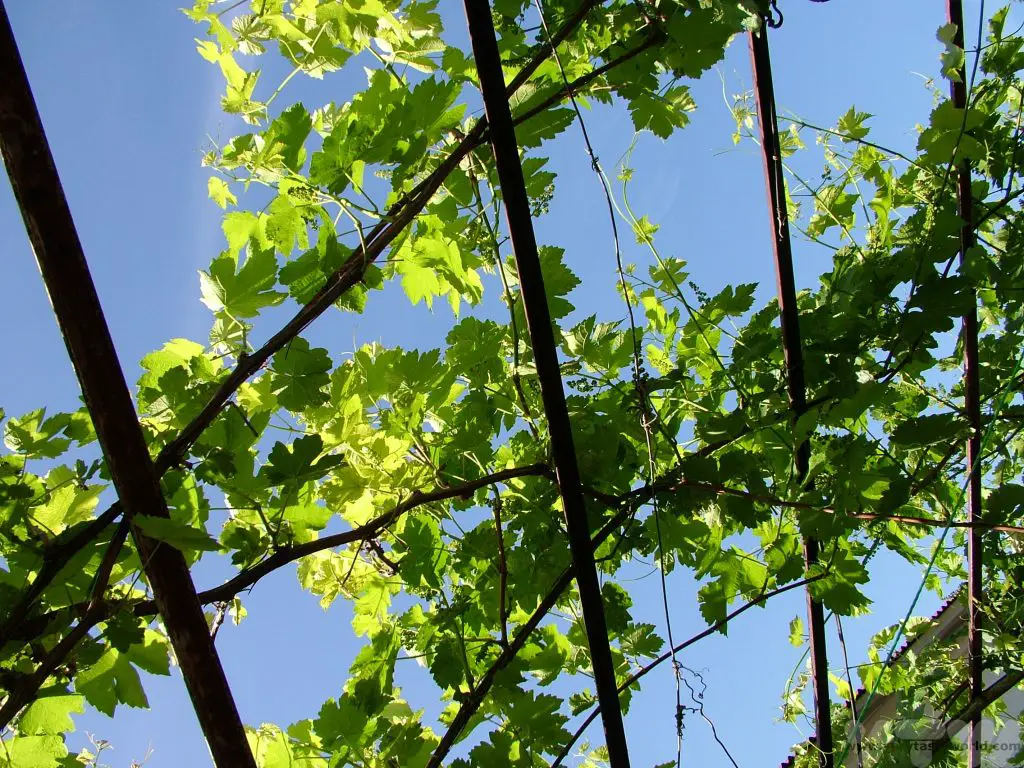
Toasting is a tradition in Georgia. You don’t tend to drink at your own pace, but at the behest of a toastmaster (tamada). A merikipe is on hand to make sure that glasses are always full and the wine never seems to stop flowing. Georgians toast their enemies with beer (we had a hilarious enemy-toasting session with our guide one night) – it is wine and chacha that are appropriate for feasting.
We didn’t go to a formal grand feast (supra), but had many, many meals at guesthouses and family homes and we followed the toasting tradition each time. Meals are designed to last the evening – they comprise several scrummy dishes laid out on the table. Everyone just helps themselves and offers food to their dining companions. And, of course, every meal included a ubiquitous, delicious and calorie-loaded cheese pie (khachapuri).
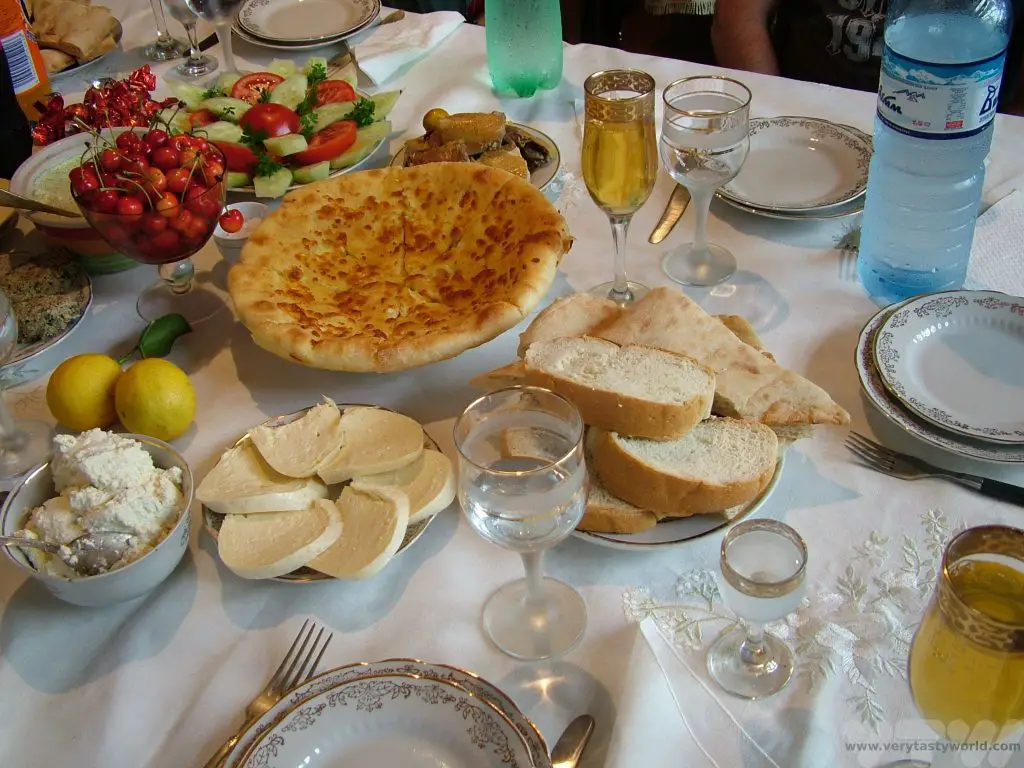
Toasting Tradition in Georgia – Etiquette
At regular intervals throughout the evening the tamada proposes a toast. Everyone adds their wishes and much wine/chacha is consumed. If you are toasted, it’s appropriate to thank everyone for their good wishes and later ask the tamada if it is okay to reciprocate with a toast of your own. One guesthouse supplied us with a very large jug of strong homemade red wine, made from the local Sapaveri grape, which was utterly splendid and eminently drinkable, to accompany the enormous evening meal they had provided.
We ate with the family. Our driver was both tamada and merikipe and led the toasting throughout the evening. (At the end of the day, naturally, when no further driving was required.) On finishing the jug our excellent merikipe asked if we wanted more wine. We said we’d join him in a tipple but only if he was partaking, not realising that he would return with another enormous jug. Gulp.
You can toast anything and everything. We were toasted several times as ‘easy guests’ (people who were thoroughly enjoying the trip, didn’t make a fuss, and were always on time) as well as ‘guests that didn’t go to bed at 9pm but were happy to stay up late feasting and enjoying the hospitality of our hosts.’ We reciprocated by toasting our hosts, Georgia, Georgian hospitality, wine, food, cheese pies, family, friends, finding Mr Right (for our guide), young people, old people, men, women, happiness, health, friendship between our countries, anything. We easily knocked back the second jug. Amazingly we weren’t hungover the following morning. Just as well as we were due to visit three different vineyards for wine tasting – hair of the dog and all that. We did rather stagger round the Kakheti region that day.
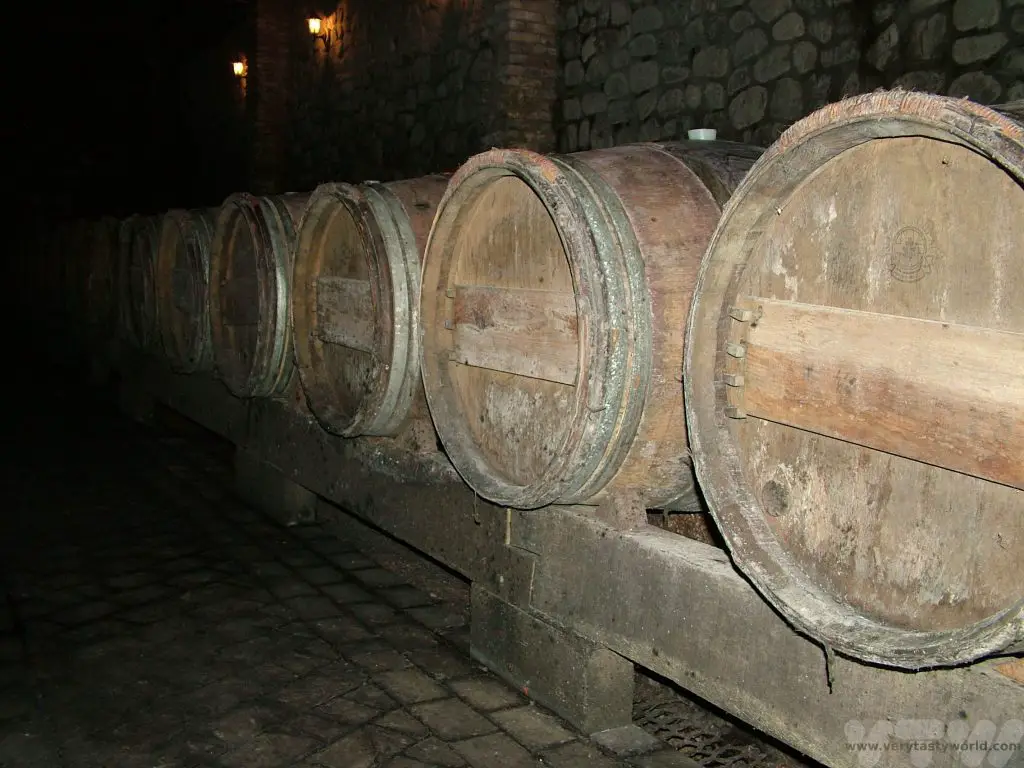
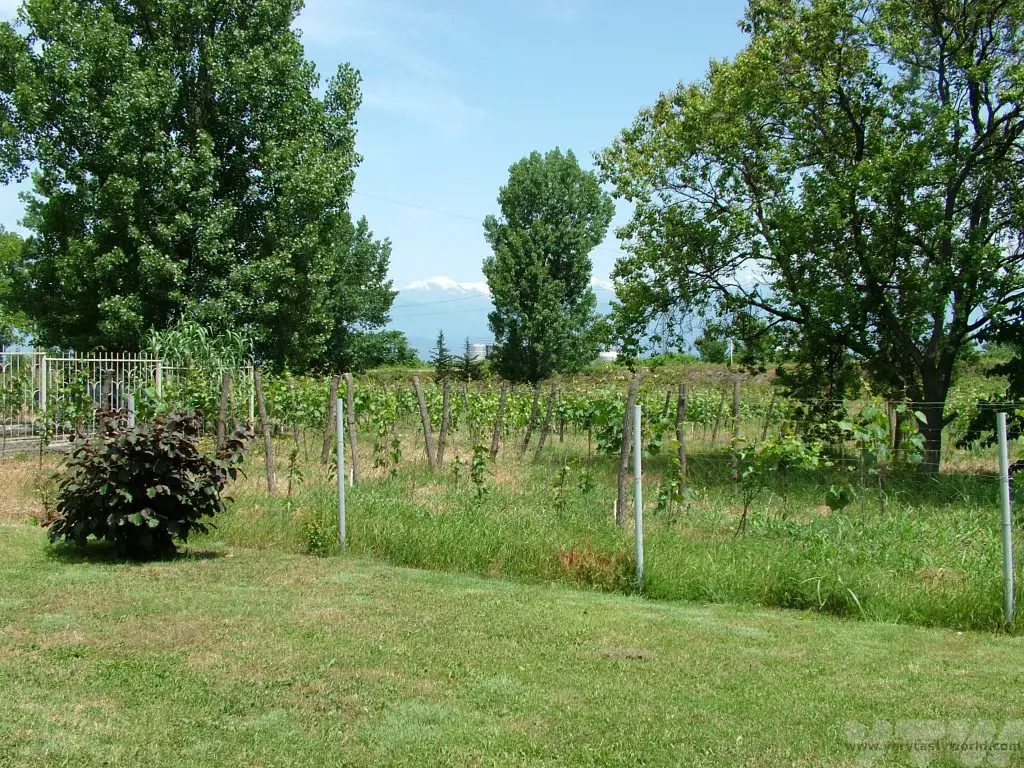
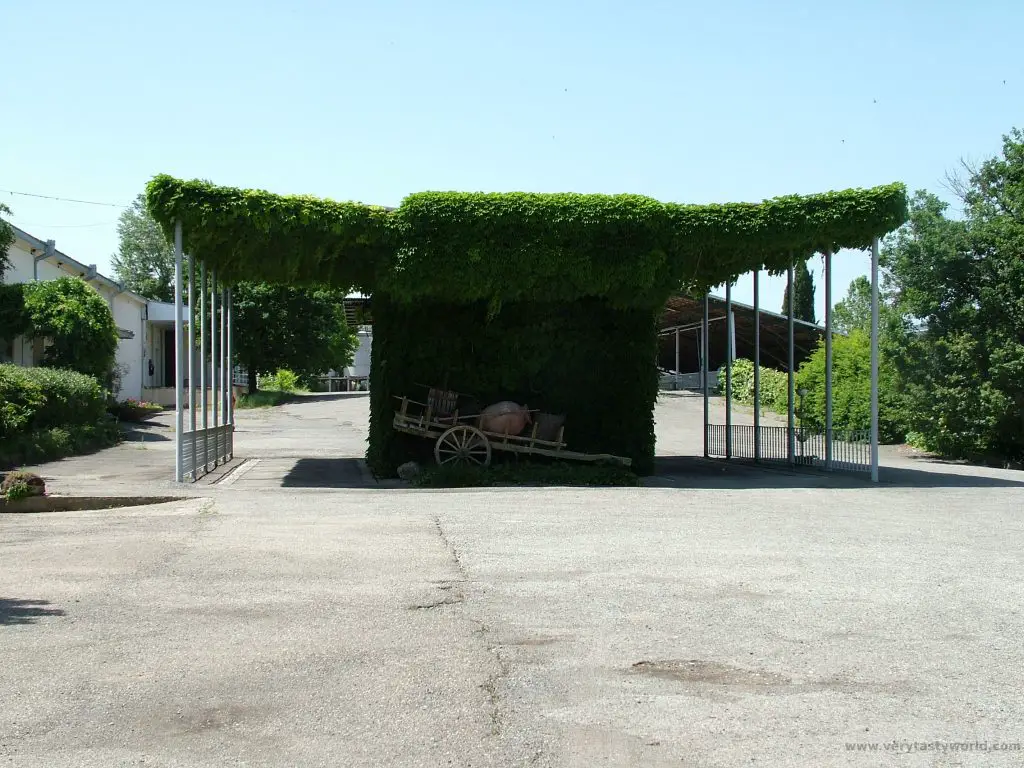
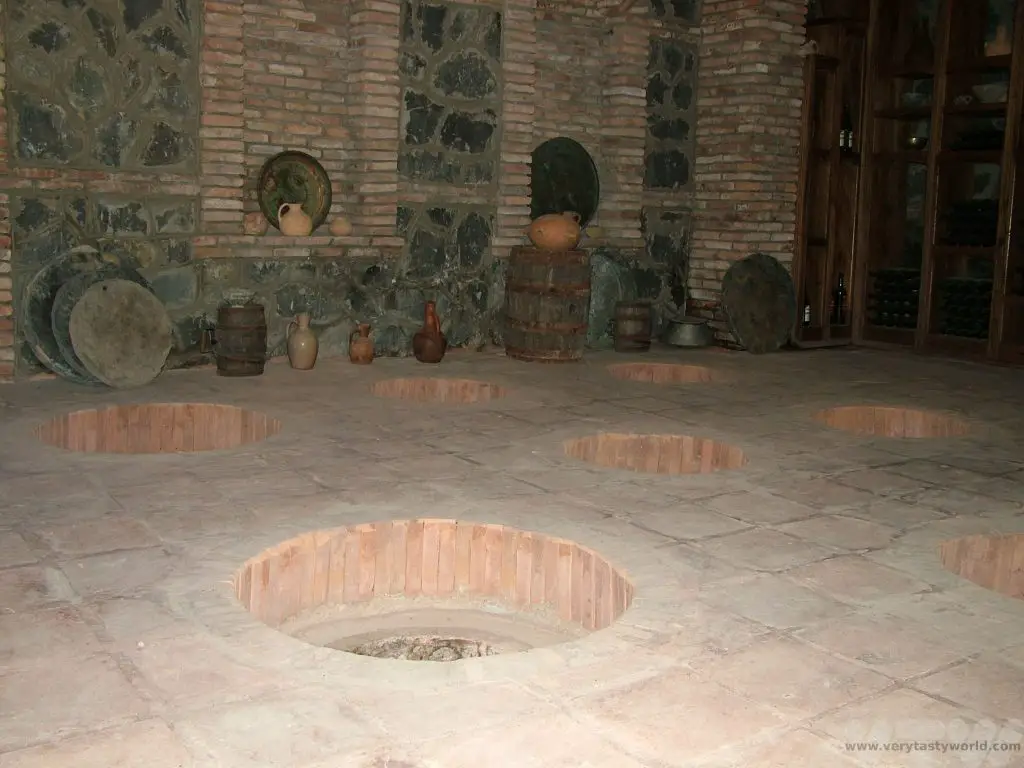
What we didn’t realise until the last day was that we had been doing the toasting all wrong. We’d been having a sip/swig from the glass per toast which seemed to us to be the best way to regulate the drinking (we’d copied our hosts, who had the same idea). Apparently the correct toasting tradition in Georgia meant that were supposed to drain the wine/chacha glass each time. Oops!
Related Posts You May Enjoy

Riga Black Balsam
The Latvian capital of Riga is both beautiful and sociable. Over the years Riga has gained a reputation as a place for hen/stag parties, but it is a city rich in heritage and culture and has a great foodie scene as well. The old town is so charming and historically important that it has been declared a world heritage site by UNESCO, recognised as ‘a living illustration of European history.’ The architecture represents many different styles of building throughout the ages, from mediaeval through to Art Nouveau (Riga is one of Europe’s most important cities for Art Nouveau architecture) but generally they complement each other extremely well.
Riga’s cathedral, the largest mediaeval church in the Baltics, was constructed in 1211 and is located close to the River Daugava. During Soviet times, between 1939 and 1989, it was used as a concert hall but reverted back to a place of religious worship in 1991. It has a magnificent organ, constructed between 1882 and 1883. The cathedral’s original organ was the largest in the world at the time but was destroyed in a fire.
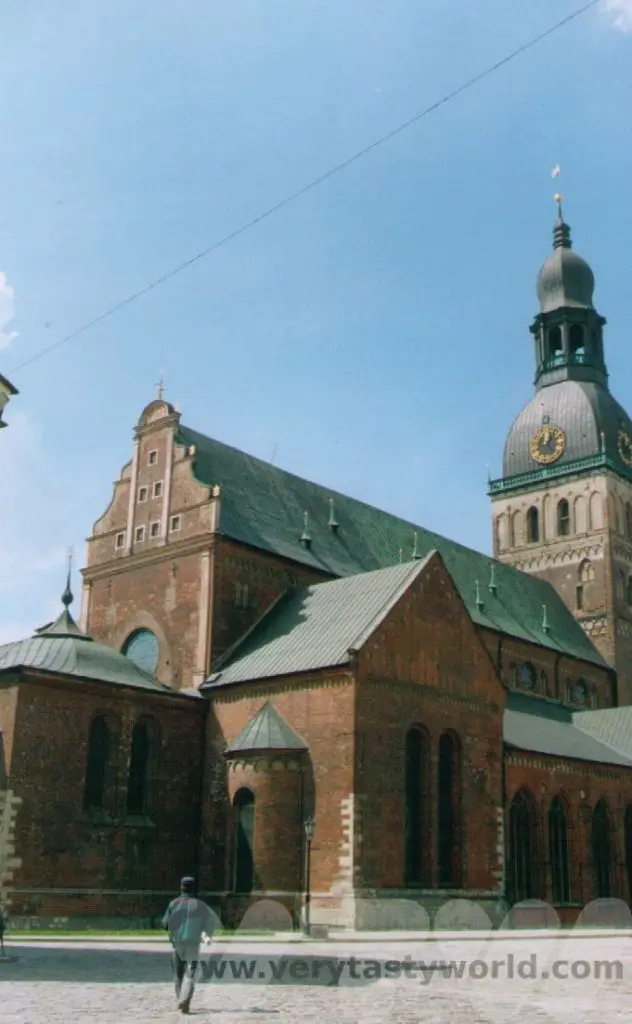
St Peter’s church has a very distinctive octagonal steeple. Dating back to the 13th century, it has been constructed and reconstructed a number of times over the centuries.
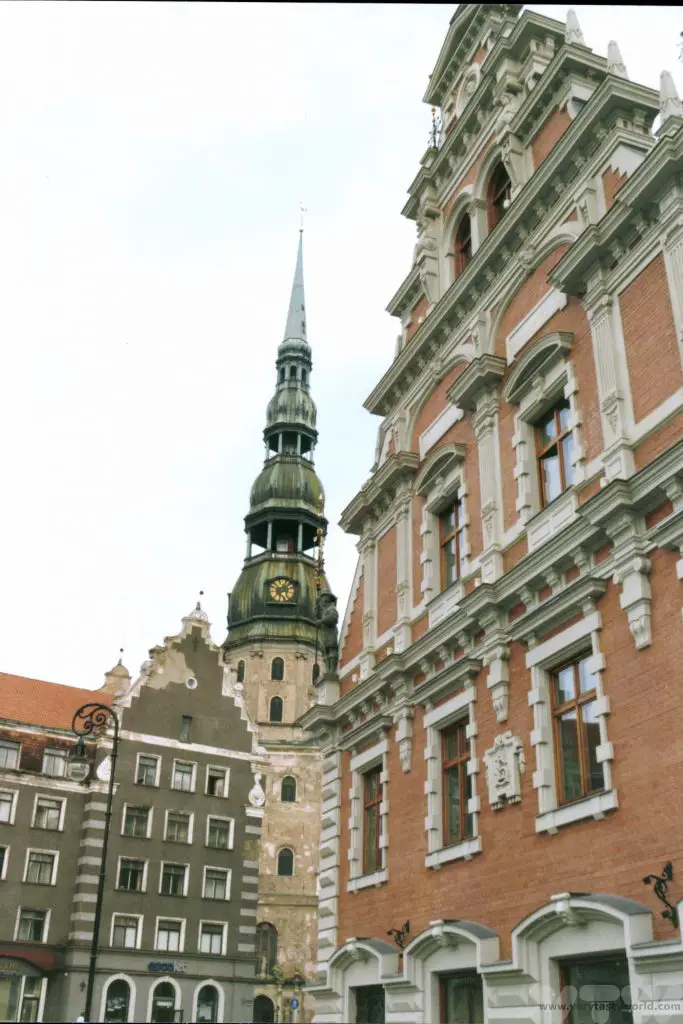
Although the House of the Blackheads is now a museum, the original building dates from the 14th century. It is a reconstruction following its destruction during World War 2. Originally, it was constructed for the Brotherhood of Blackheads, who were an association of unmarried merchants, shipowners and foreign people living in Latvia.
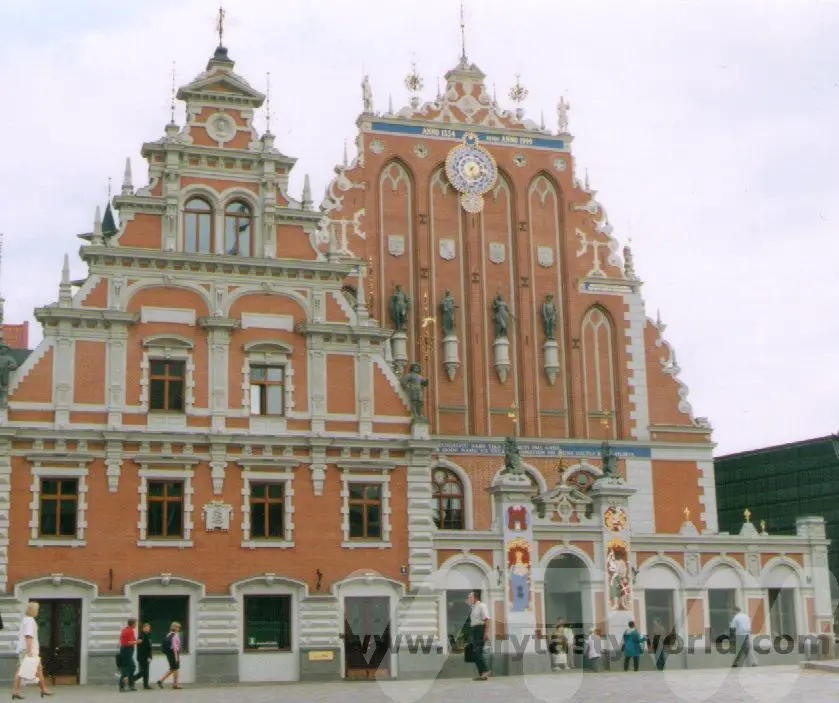
Fans of felines will like the Cat House on 10 Meistaru iela. Its style combines mediaeval and Art Nouveau architecture. It was built in 1909 and is best known for the angry cat sculptures, backs arched and curvy tails pointed upwards, on the towers of its roof.
There are two possible reasons associated with the positioning of the cats, notably connected with the direction that their tails – and bottoms – are facing. The owner of the building was apparently a wealthy merchant who had a dispute, either with the Riga Tradesmans’ Guild or the City Council, and wanted the cats’ tails pointing towards direction of his grudge. Both the town hall and Great Guild Hall are located in the same area.

Further out of town it’s possible to visit the 368m tall TV and radio tower outside the city. It has an unusual tripod construction and you can use the elevator to reach the observation platform where you can see a splendid view of the Daugava river and the city.
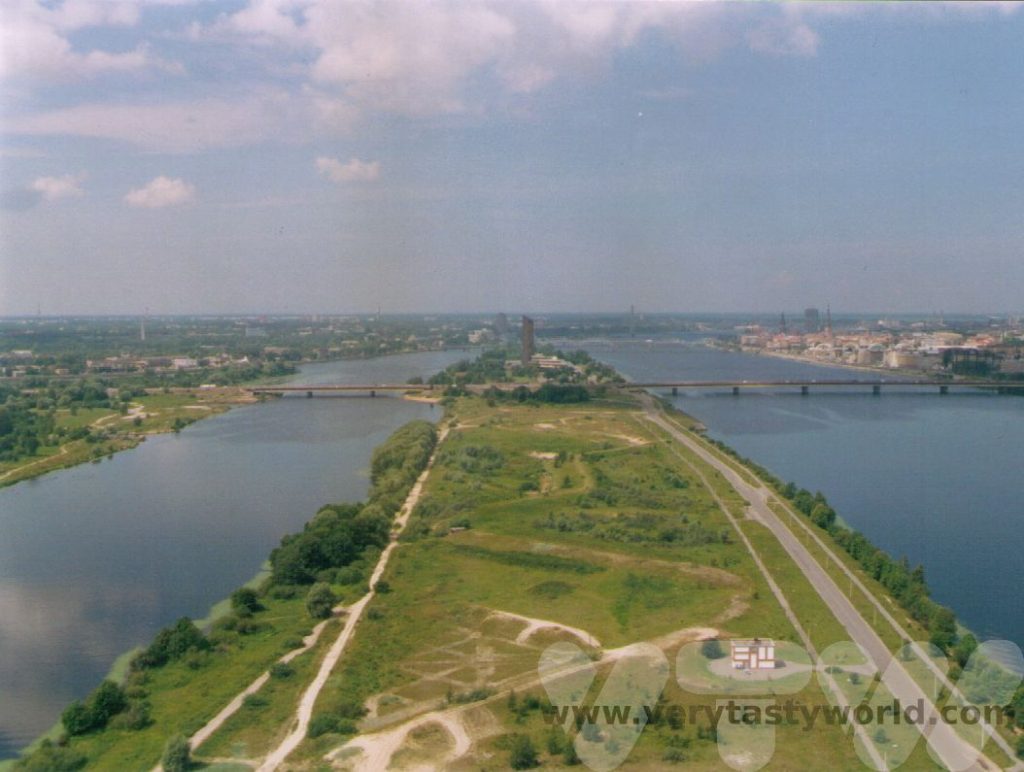
The old town is quite compact and largely pedestrianised and is delightful to wander through. Add in a whole bunch of excellent restaurants and drinking emporia and it makes for the perfect city break. The market, which used to be a zeppelin hangar, is one of the largest in Europe and offers foodie tours so that you can try local delicacies.
Riga Black Balsam
There are a number of bars and these offer a whole range of local beers and alcoholic beverages to enjoy. One of Latvia’s signature boozy beverages is black balsam, a strong liqueur. Created over 250 years ago by pharmacist Abraham Kunze from all natural ingredients it’s medicinal and environmental – a healthy traditional tipple. It’s basically an infusion of botanicals in a spirit.
According to the Baltic Spirits website the ingredients in Latvian balsam are:
Bilberry/Blueberry (Vaccinium myrtillus)
Raspberry (Rubue idaeus)
Birch buds (Miricia gale)
Bitterwort root (Gentiana lutea (Great Yellow Gentian))
Peppermint leaves (Mentha piperita, also known as M. balsamea Willd.)
Wormwood stalks and leaves (Artemisia absinthium)
Ginger root (Zingiber officinale)
Valerian root (Valeriana officinali)
Sweet Flag root (Acorus calamus)
Melisa leaves & stems (Melissa officialis)
Linden blossom (Tilia cordata Mill.)
Oak bark (Quercus robur)
St. Johns Wort (Hiperycum perforatum)
Buckbean leaves (Menyanthes trifoliata)
Black pepper (Piper nigrum)
Bitter/Wild Orange skins (Citrus aurantium)
Nutmeg (Myristica fragrans)
Peruvian balsam
Brandy
Natural honey aromatics
Glucose syrup
Browned sugar
Grain spirit
Partially frozen 189 to 198 metre deep arterial waters.
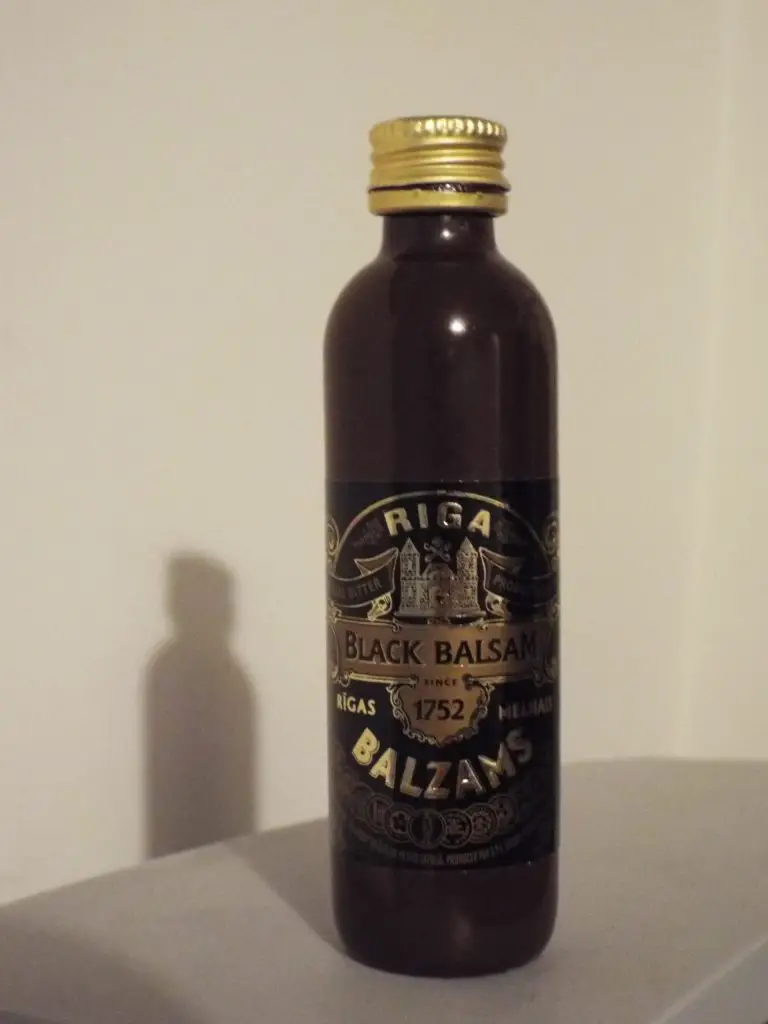
It has a very classy brown ceramic bottle. The liquid itself lives up to its name. The legendary Nigel Tufnel from the mockumentary film This is Spinal Tap, might describe it as follows: ‘It’s like, how much more black could this be and the answer is none. None more black.’
Actually, if you hold it to the light it isn’t quite as black as it initially appears. On first pouring the Latvian balsam you notice the fruity, floral and leafy aroma. The blackcurrant flavour is notable as are the distinct essences of the more herbal, bark, root and leaf ingredients that accentuate the medicinal properties. This, then, is health and welfare with real spirit. The initial taste matches expectations but then the varied combination of herbs and roots kick into tantalise your tastebuds. This ensures that it’s a distinctively different tipple compared with the earthy but almost perfumed scent.
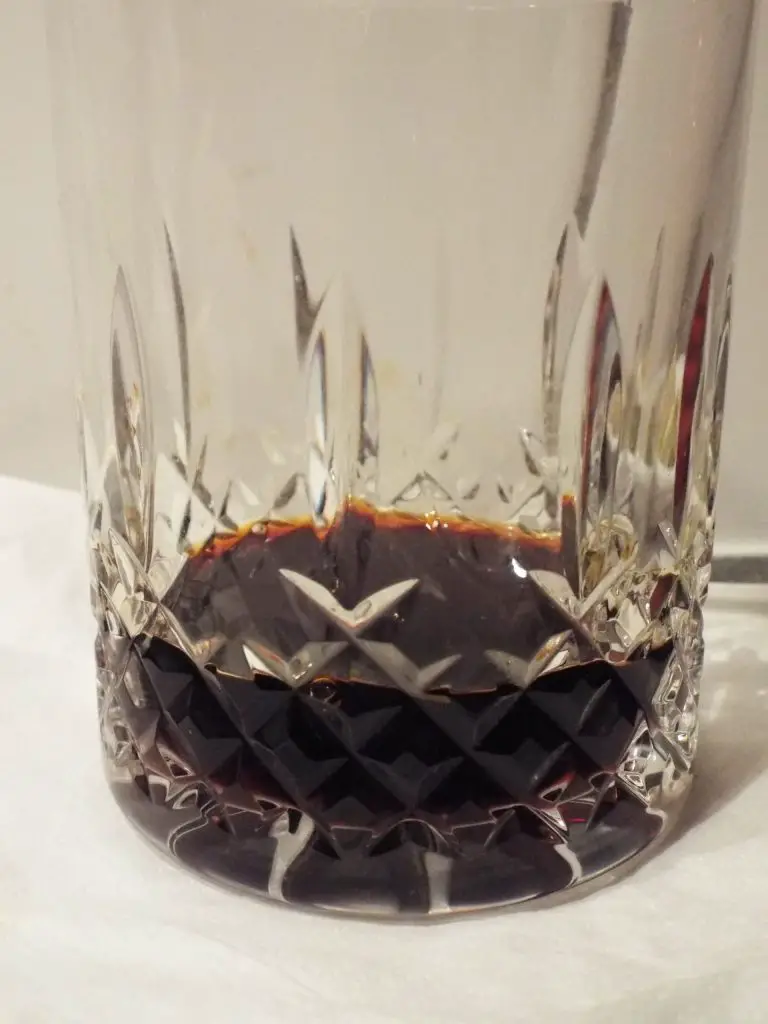
It is an acquired taste but the blend is superb. What is even more noticeable is the aftertaste which lingers on your palette as a robust reminder of your delicate sip.
The classic way to drink black balsam is straight or on the rocks. But of course there are all sorts of cocktail variations which can make it a bit more palatable if you find that it’s a touch on the strong side. There are also different versions of balsam including a fruitier blackcurrant flavour and smooth cream liqueur.

Pilsners for Pedestrians in Prague
Some cities are beautiful. Others are plain ugly. Some are superficially unattractive and their charm needs to be discovered when you explore them. But Prague’s architecture ensures that it is one of the most elegant cities in the world. It’s a great size for walking around too. A long weekender city break will ensure that you can enjoy the main sights, including splendid museums and theatre shows, and even take in a day trip away from the city.
The town square with Tyn Cathedral are centrally located between Wenceslas Square and Charles Bridge. It holds enormously popular Christmas and Easter markets each year. Just off the square is the amazing mediaeval astronomical clock, located on the town hall wall. It is apparently the third oldest such clock in the world. Inevitably it attracts large crowds trying to get photos, especially on each hour when the figures adorning the clock are set in motion and the twelve apostles appear.
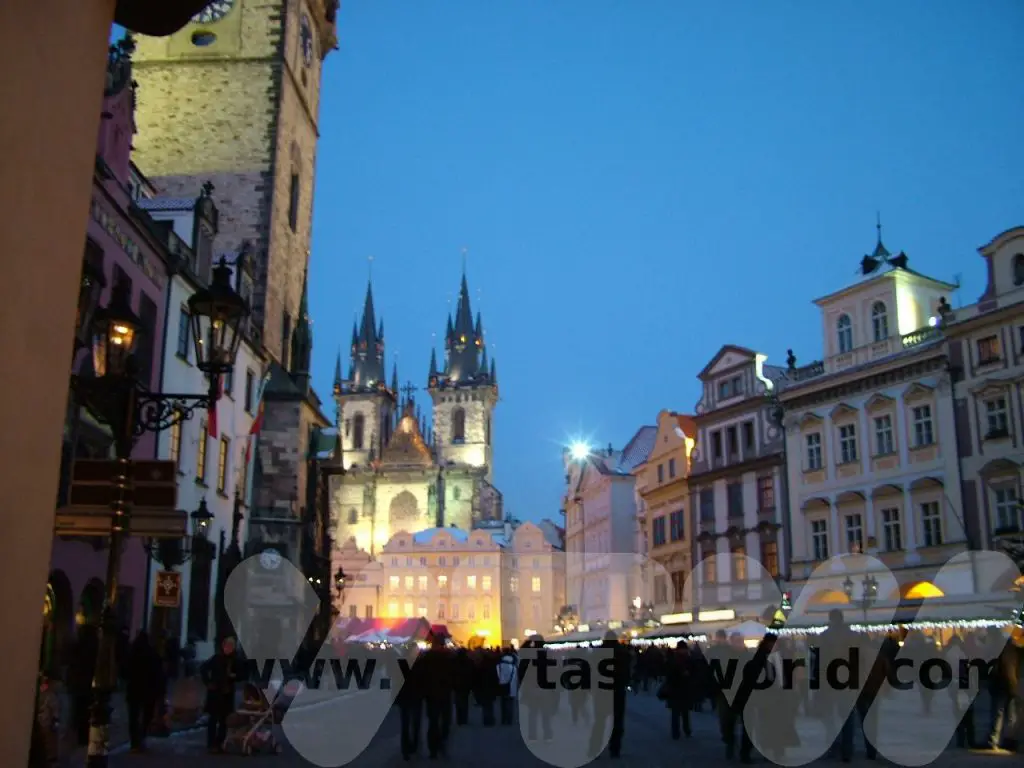
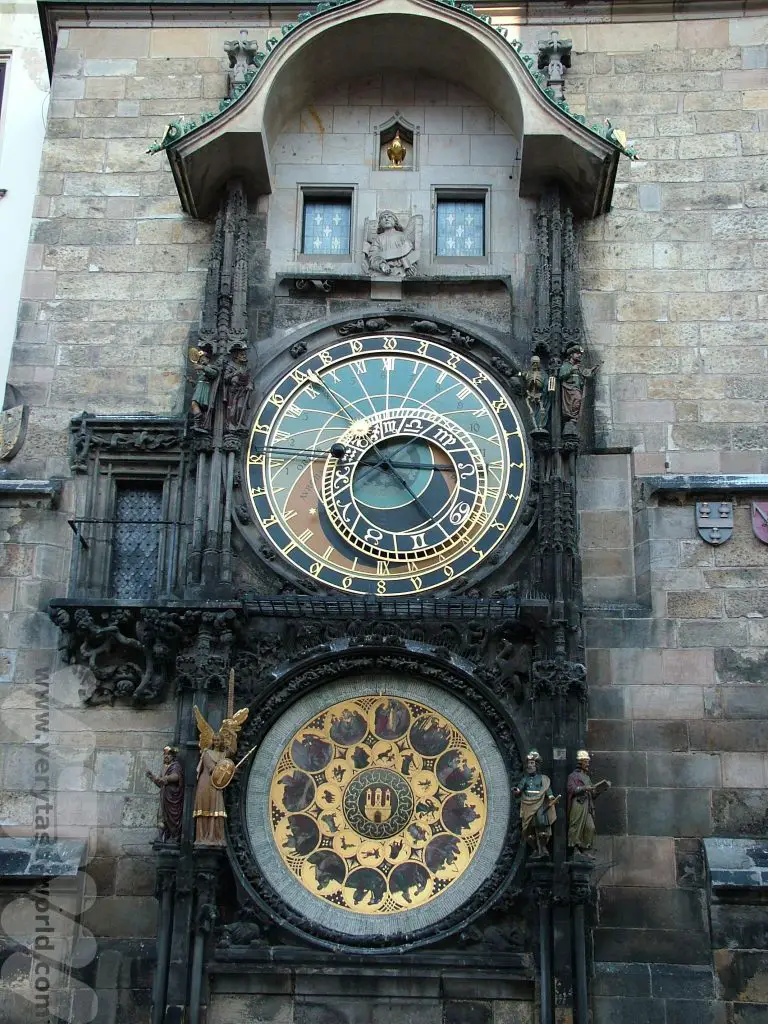
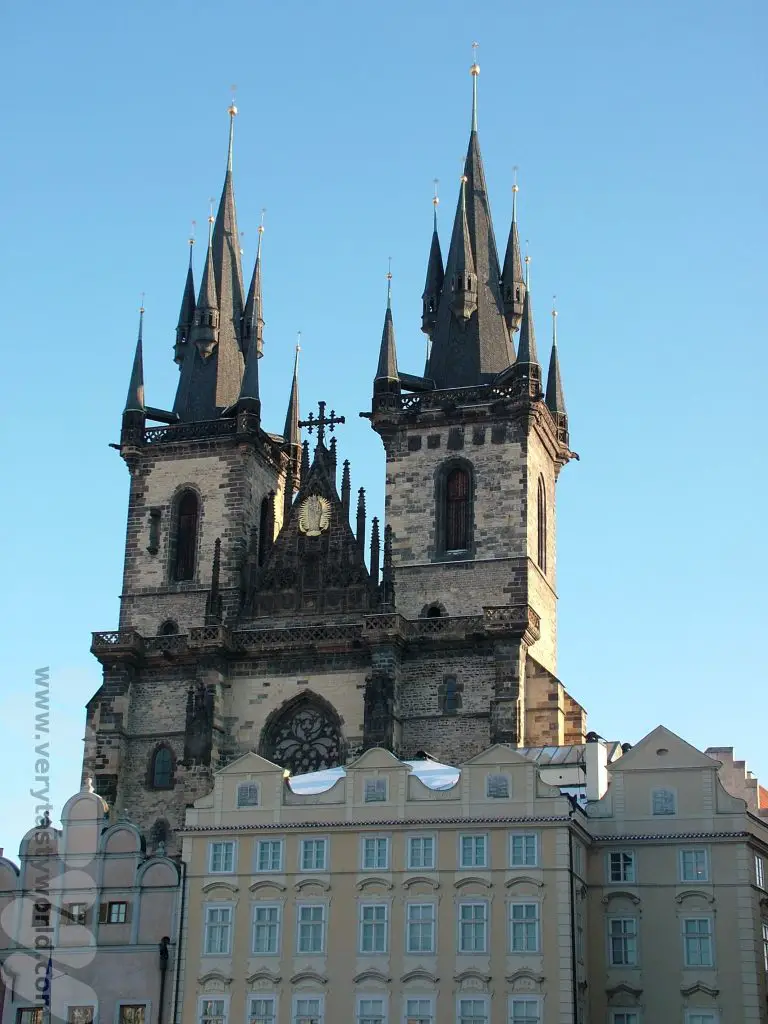
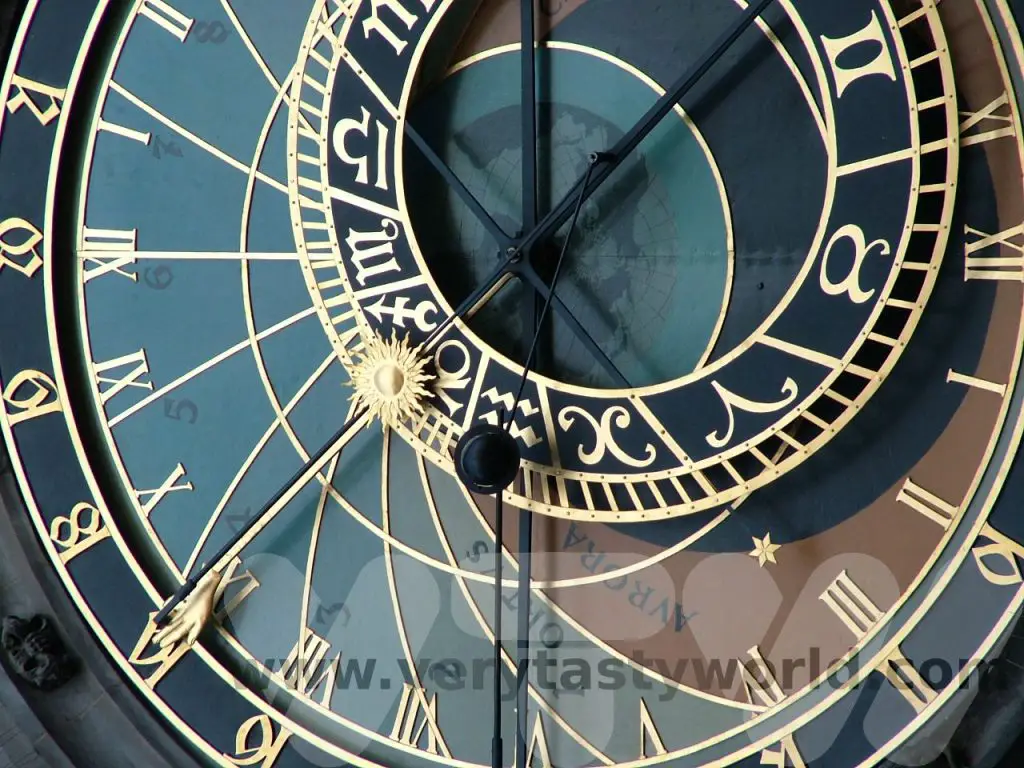
Charles Bridge is the oldest bridge in the city and crosses the Vltava river, and has many statues of saints lining its balustrade.
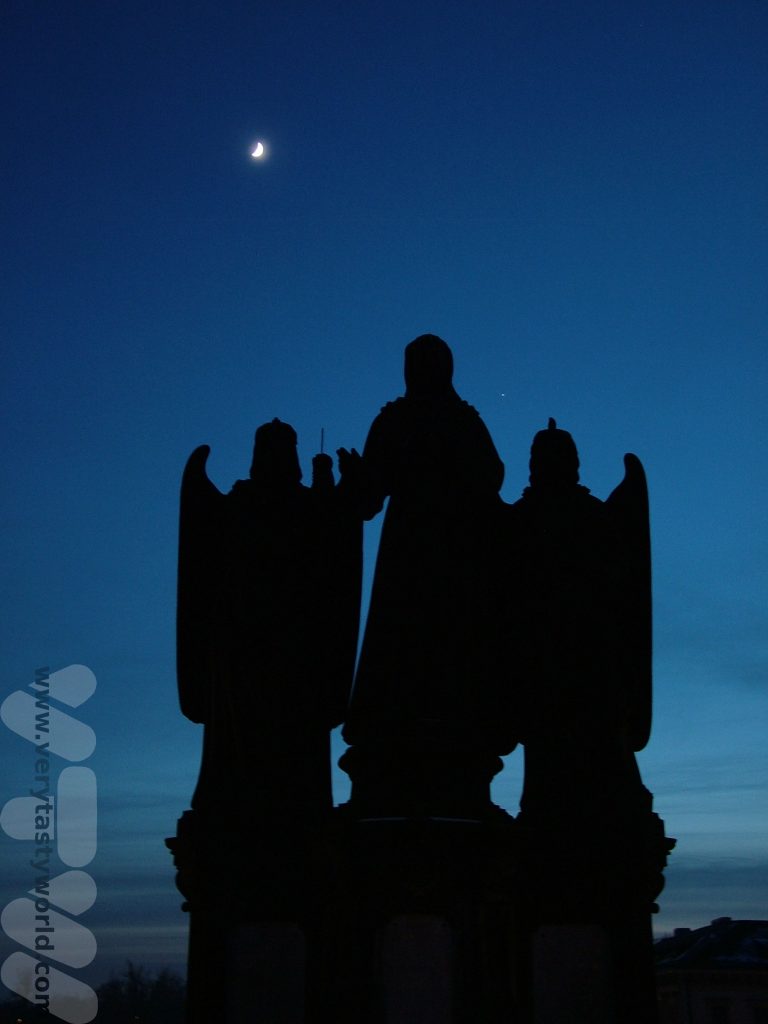

After crossing Charles Bridge it’s a short hike up the hill on the other side of the river to Prague Castle which proudly overlooks the city. The president resides here now but it was formerly a residence for kings of Bohemia. It makes for an interesting morning exploring the extensive complex with its fascinating buildings.
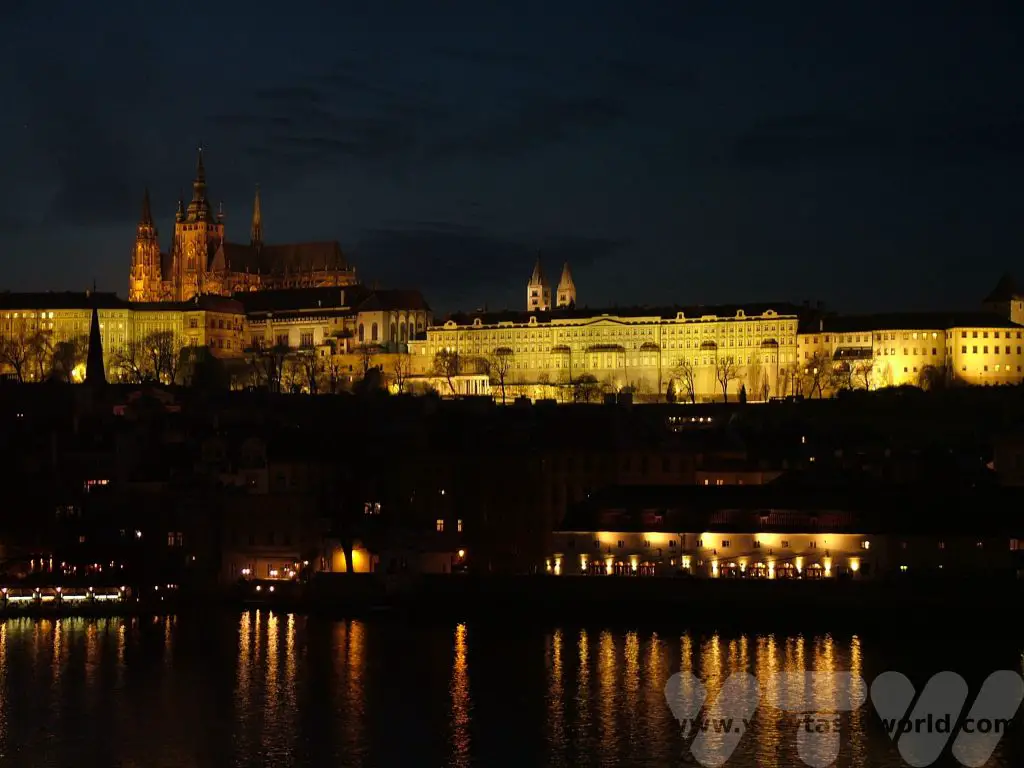
Within the castle grounds the most famous building is St Vitus Cathedral. The site dates from the 10th Century and is considered to be the most important place of worship in the country. The gorgeous gothic structure of the cathedral started construction in 1344 and was further developed over the centuries.

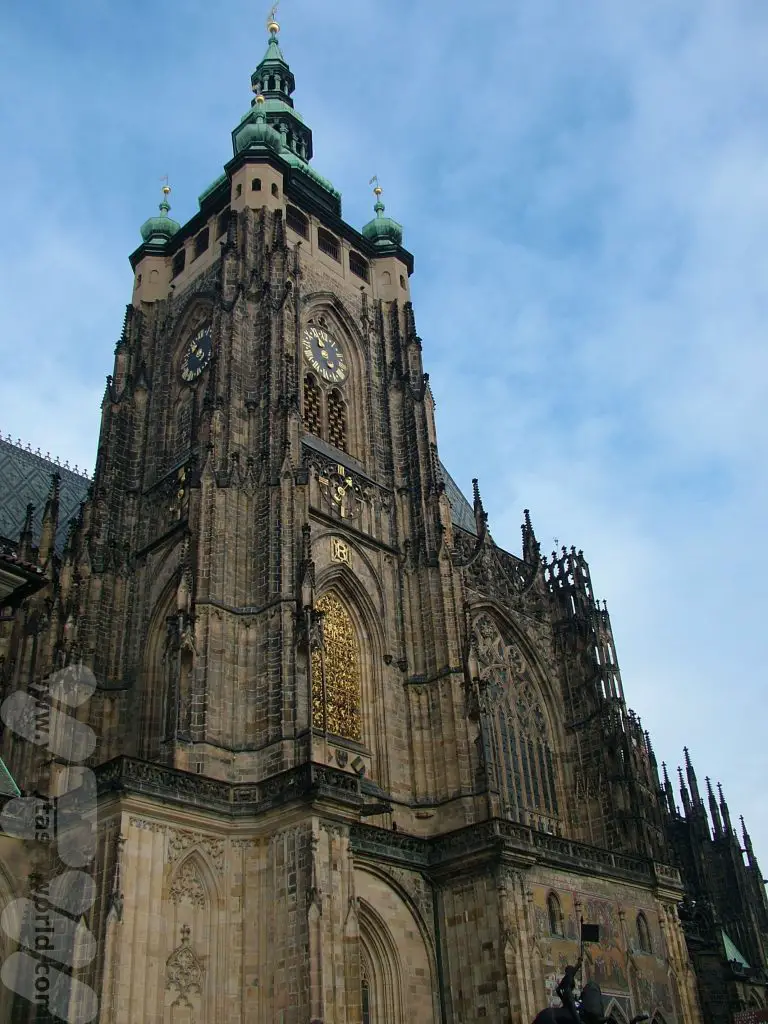


It has the most stunning stained glass windows.
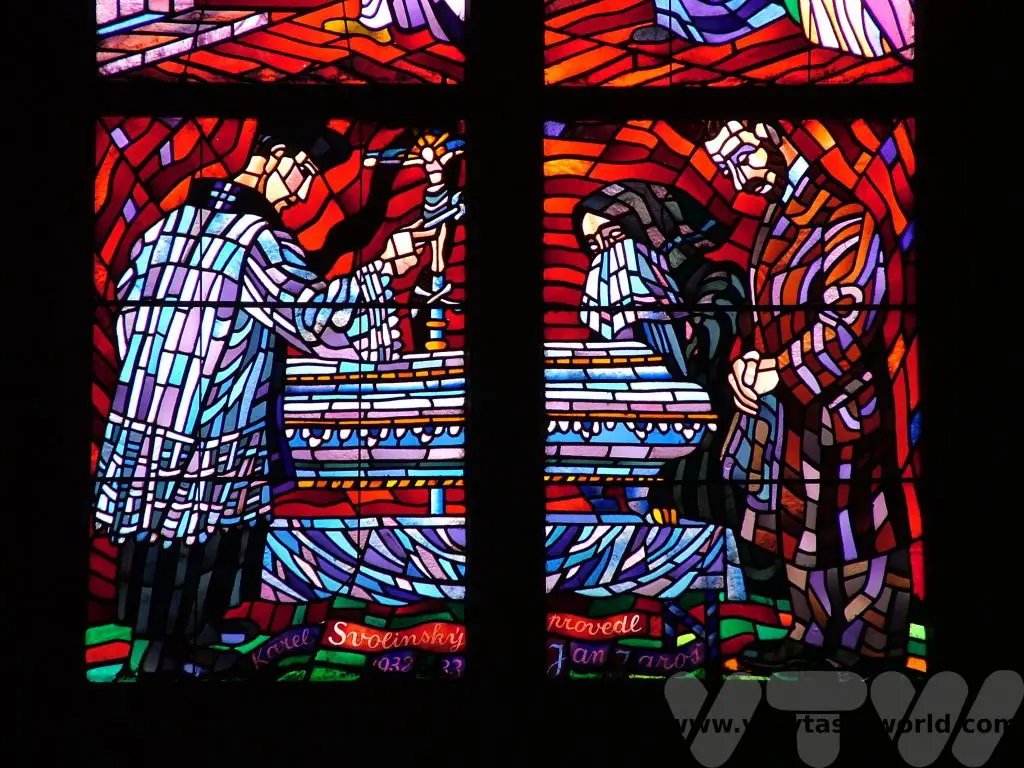
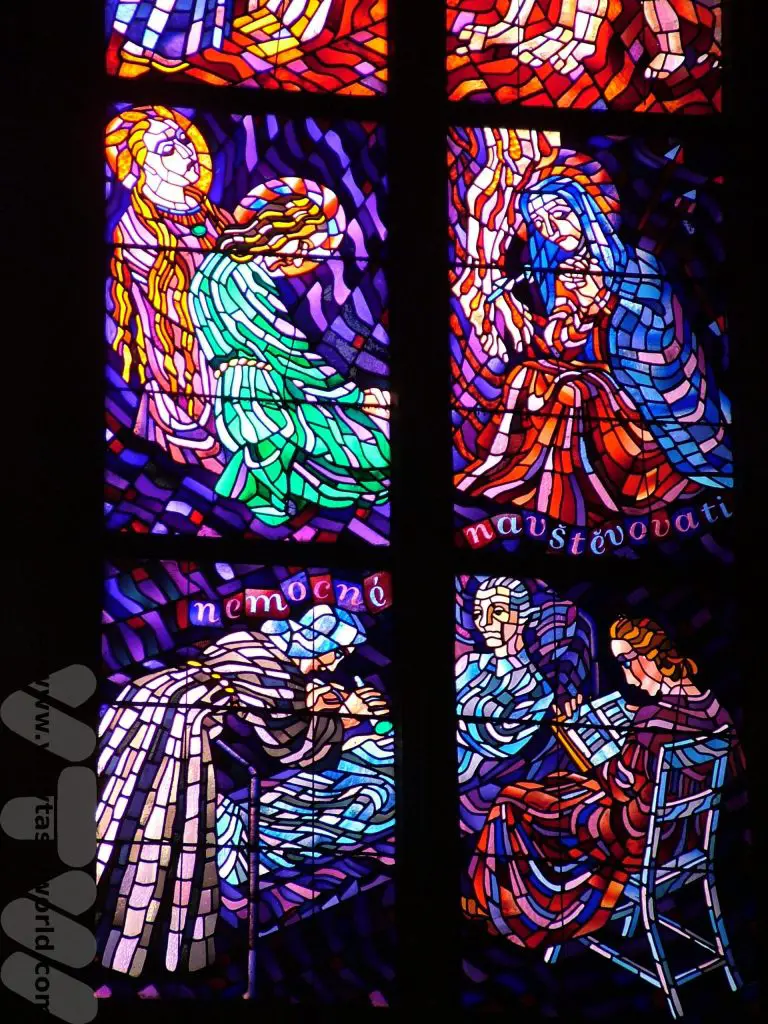

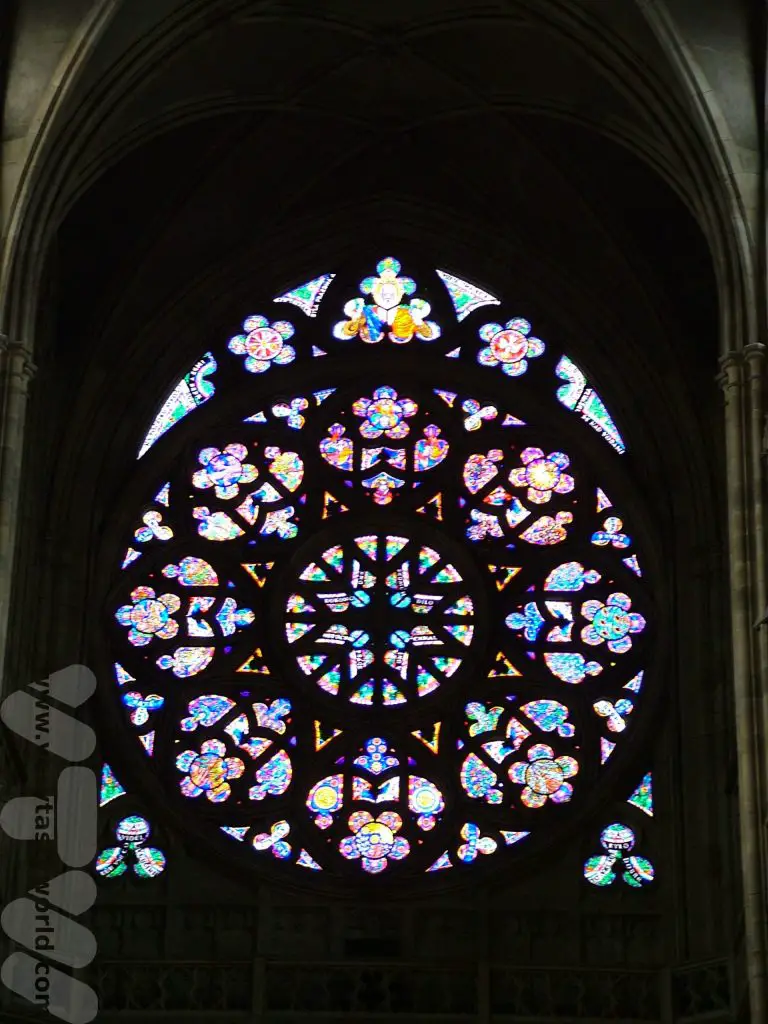
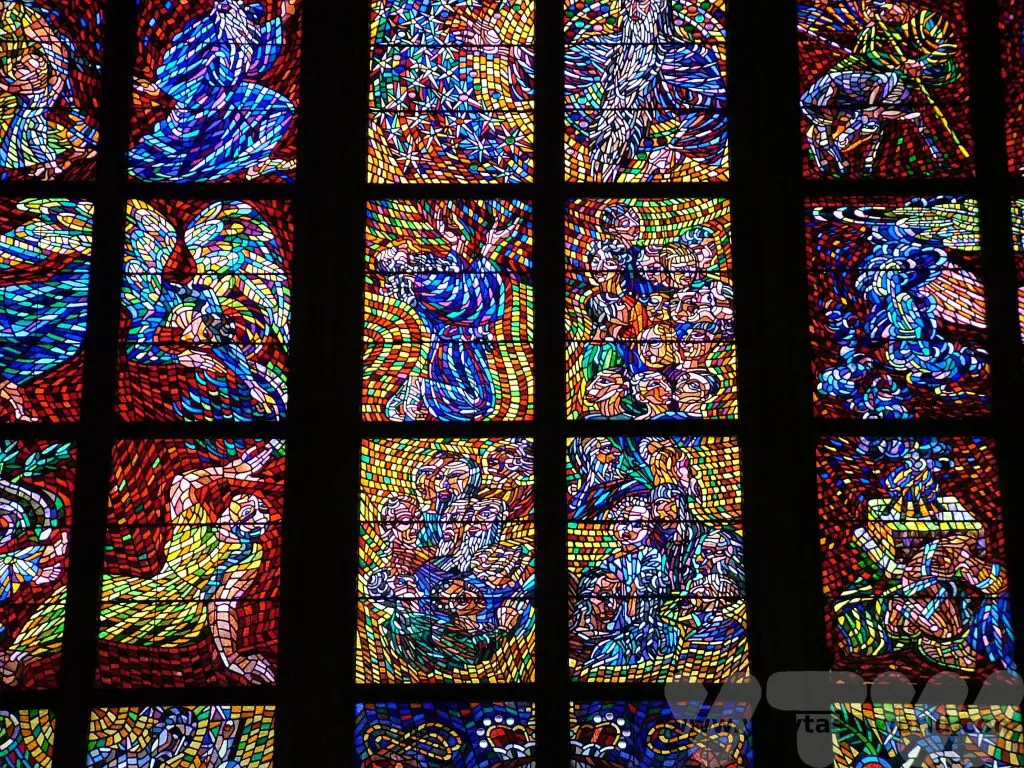
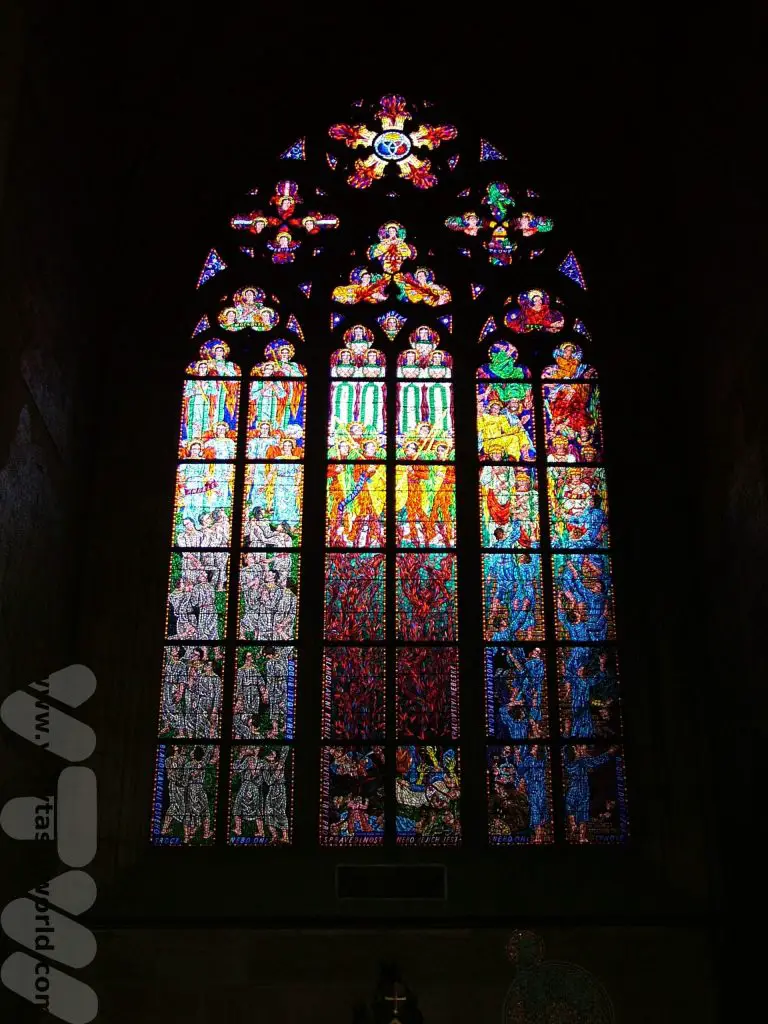
We were mildly sozzled for much of the trip because it turned out that beer was cheaper than water and there was a huge variety to choose from.
Most styles are pilsner, a pale lager which offered much refreshment after a morning or afternoon’s exploration of the city.
Pilsners were developed in the Czech Republic, originally in the city of Plzeň that’s located around 90 km west of Prague, in the mid nineteenth century. Using a malting process that ensure the barley was kilned to be significantly paler than traditional malts, a yeast that fermented on the bottom of the container and lots of noble hops (Saaz being a notable variety) which provide the beer with its bitter element, the local water also proved to be ideal for production as it was relatively free of minerals. A good pilsner is golden in colour, hoppy (but not too hoppy), and should have a balance of flavours.
In Prague the beers were served cold, with a large, frothy head. This style of serving is popular in much of Europe (and also in Japan, whose brewers imitated the style of pouring they visited Germany to learn their craft in the late nineteenth century). In the UK we’re not so keen on a massive head (less actual beer in the glass!) but apparently the froth protects the beer from oxidation which helps maintain the flavour of the pilsner. Although if you drink it quickly enough you, too, can help prevent oxidation!

Of course, we made sure we tasted as many as possible. There seemed to be a convention for ordering beer:
1) You will be offered beer as soon as you enter any fine establishment.
2) It’s perfectly OK to go into a restaurant to drink beer and not order food.
3) The default size seems to be large (0.5L). You would have to ask for a small beer. But why would you want to do that?
4) The friendly barperson will have a preternatural ability to detect that your glass is empty the moment you swig the ultimate drop and will offer you more beer instantly. It’s usually a good idea to accept.

Perito Moreno Glacier Tour, Patagonia
The Perito Moreno glacier, located around 80 kilometres away from the Argentine Patagonian town of El Calafate and inside Los Glaciares National Park, is one of the area’s most famous attractions. The Perito Moreno is unusual in that it is one of the few glaciers in the world that is still advancing. Most are shrinking as a result of climate change. There are plenty of options for taking a Perito Moreno glacier tour.
When I was studying geography many years ago, human geography always seemed to be less interesting (counting different types of shop in the central business district of a small town) compared with physical geography and meteorology, where we learned about about oxbow lakes, karst scenery, lapse rates and glaciation. These geographical features seemed to be exotic and exciting and, well, very different from anything to be found in suburban Surrey. To be able to see a glacier up close – and actually walk on it – was an ambition fulfilled.
Getting to the Perito Moreno Glacier
Although it’s possible to hire a car in the area, and we did this for our visit to Torres del Paine in Chilean Patagonia, we were generally travelling on buses through the region, which was a convenient and relaxing way to travel. So there are loads of tour operators in El Calafate who can arrange a trip to Perito Moreno. It’s about an hour and a half journey to the glacier from the town and most operators can arrange a pickup from your accommodation.
You enter Los Glaciares park and will have to pay the entrance fee which usually isn’t included in the price of the tour. The park website has details of ticket prices and you can also pre-book them online.
There are choices for exploring the glacier – you can walk along an excellent viewing trail but it is also possible to don crampons and undertake a trek on the glacier. There’s the Big Ice for hardy young souls, where you’ll spend about 8 hours on the ice and traverse a wide section of glacier, or the Little Ice which is a taster for people who are less intrepid. Or just old – when we visited there was a rule that you were not allowed do the Big Trek if you were over 45 years old. This rule has now changed but it is important that you are physically fit and don’t have any mobility issues.
If doing the glacier walk, you’ll be taken to a small ferry and will then cross the lake. It takes about half an hour and the view of the glacier is wonderful. There’s a full briefing available in English and Spanish and you will be accompanied on the glacier by several experienced guides.
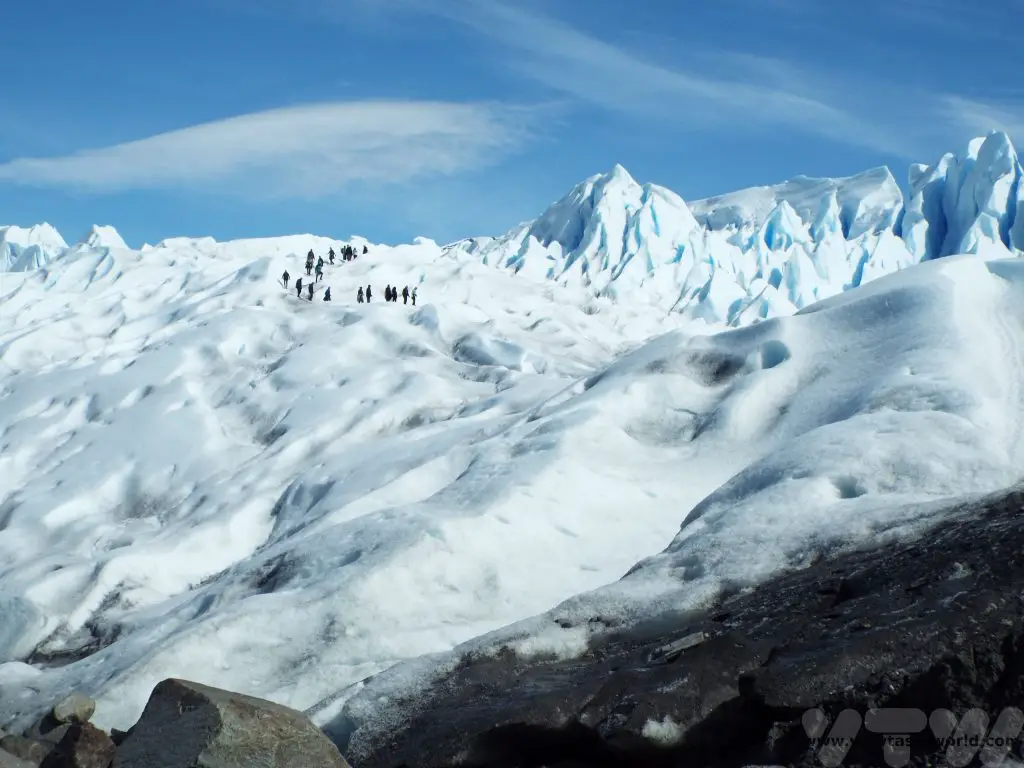
Little Ice Trek On The Perito Moreno Glacier
Even if you’re too old for the Big Ice, the Little Trek is still a marvellous experience. You need to wear a long-sleeved top and bring gloves because the ice is surprisingly sharp (it’s not like fluffy snow) so you don’t want to hurt your arms or hands if you fall over. Sturdy shoes are essential.
You’ll be loaned some crampons, spikes that strap to your shoes (hence the need for good footwear) which will enable you to walk on the ice without slipping over. They’ll be fitted by people who know how to fit crampons and this will ensure your safety on the ice.
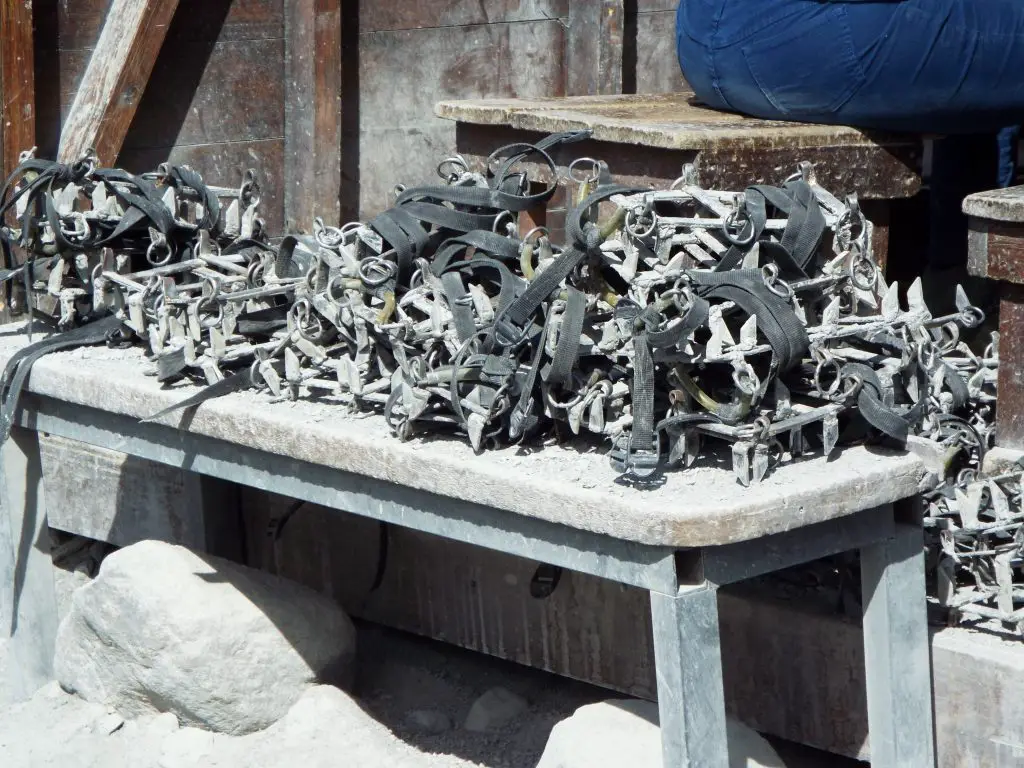
Crampons take a little bit of getting used to, especially when walking downwards on the ice. When walking straight or uphill, just walk firmly, keeping your legs slightly apart, about the same width as your shoulders, making sure the spikes embed themselves into the ice. When walking downhill, keep your feet facing forward, again with legs slightly apart and walk steadily. Opening your feet out penguin style or trying to walk downhill sideways, like a crab, doesn’t work.
Once on the glacier there are some amazing sights.
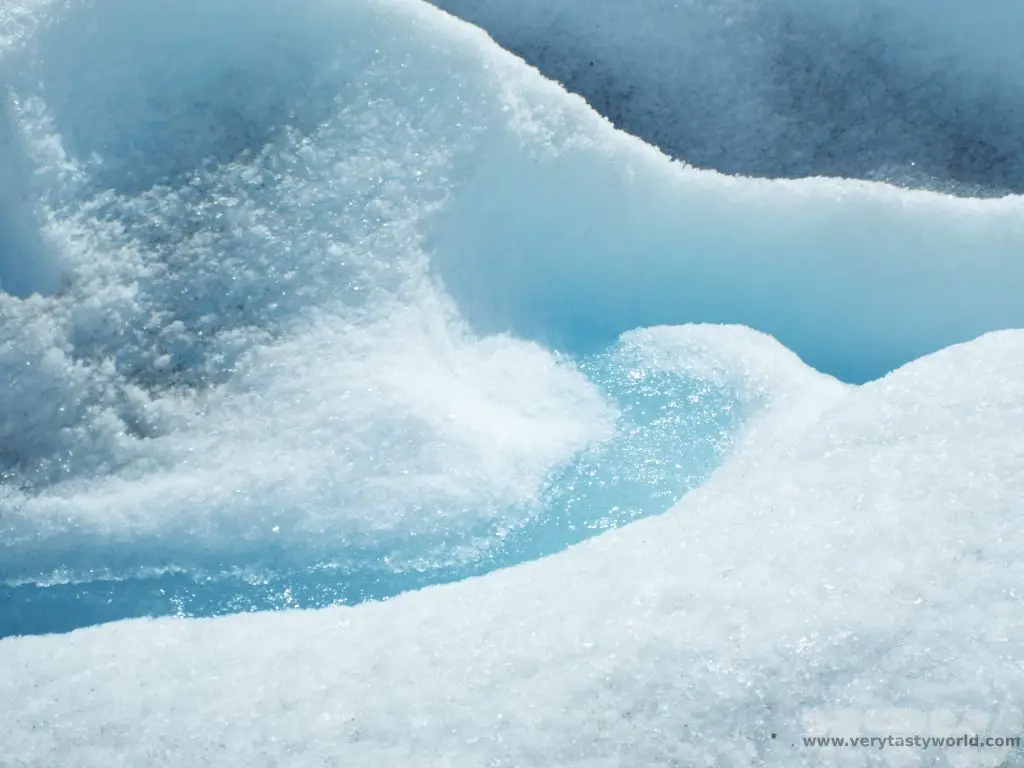
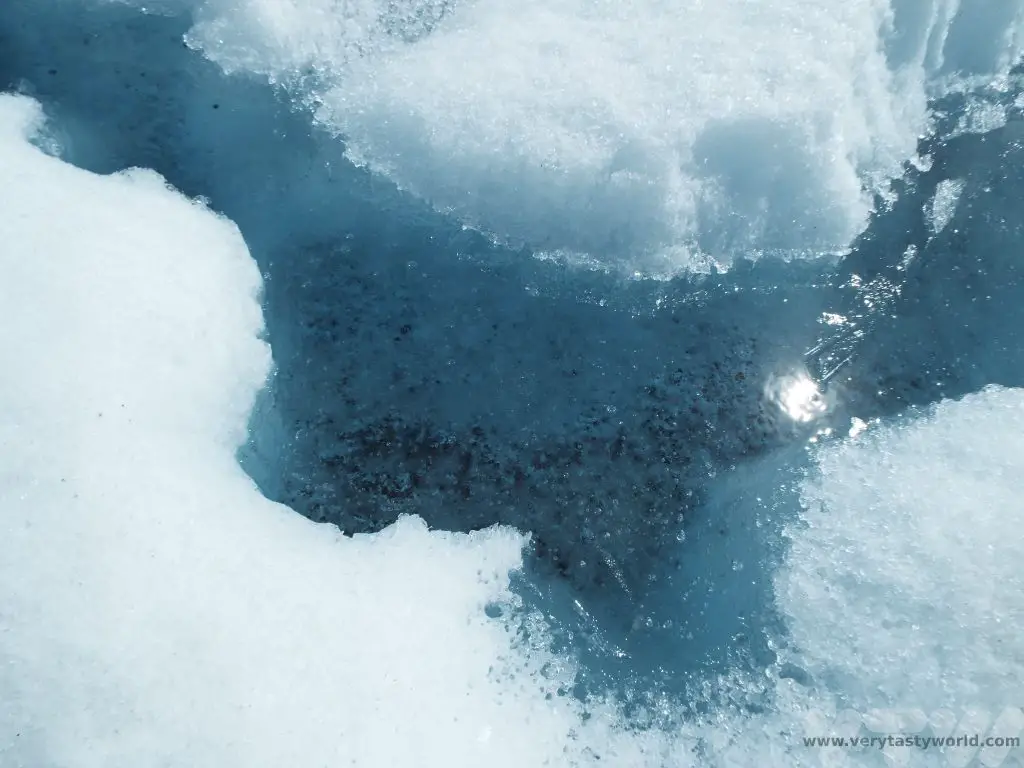
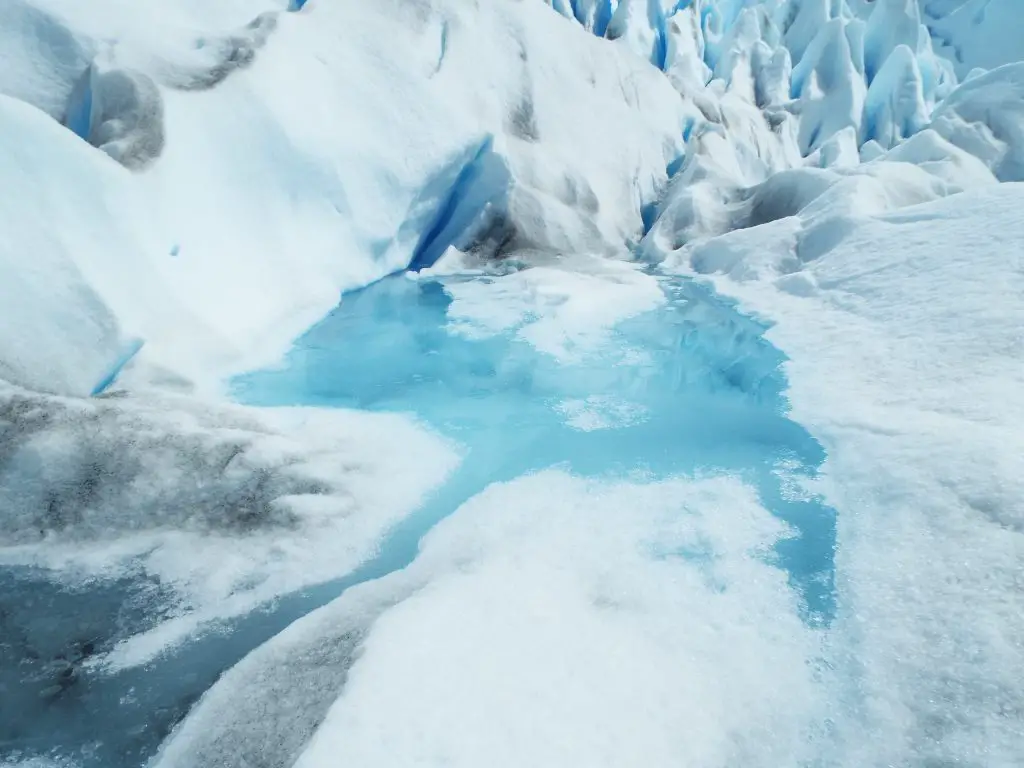
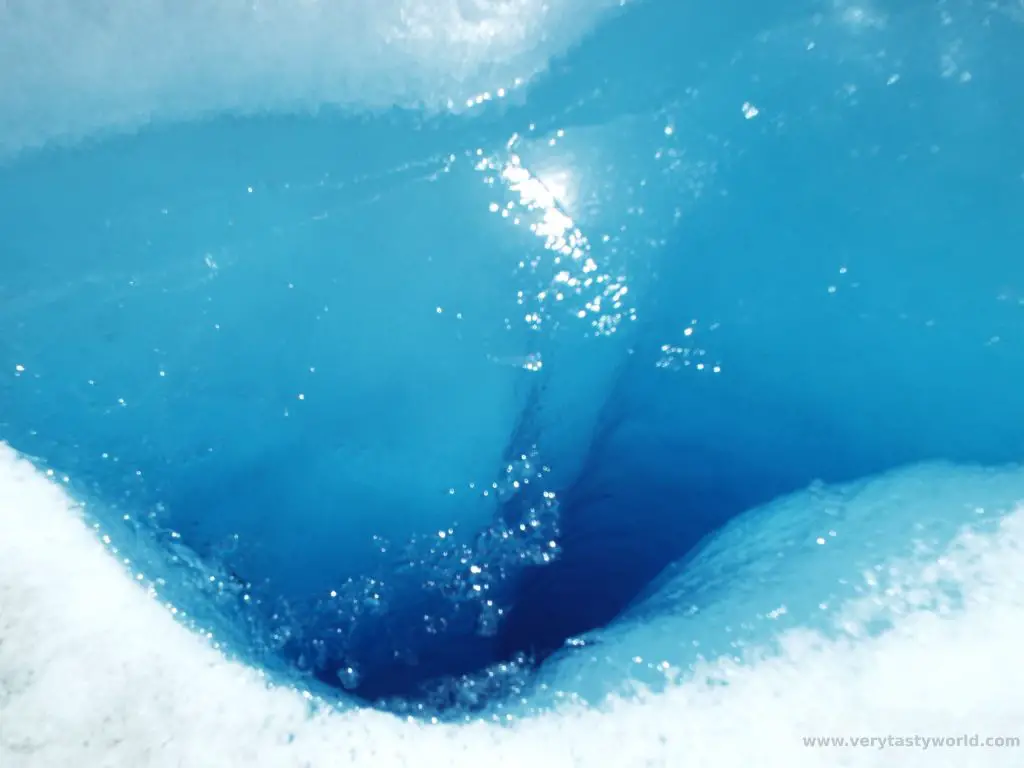
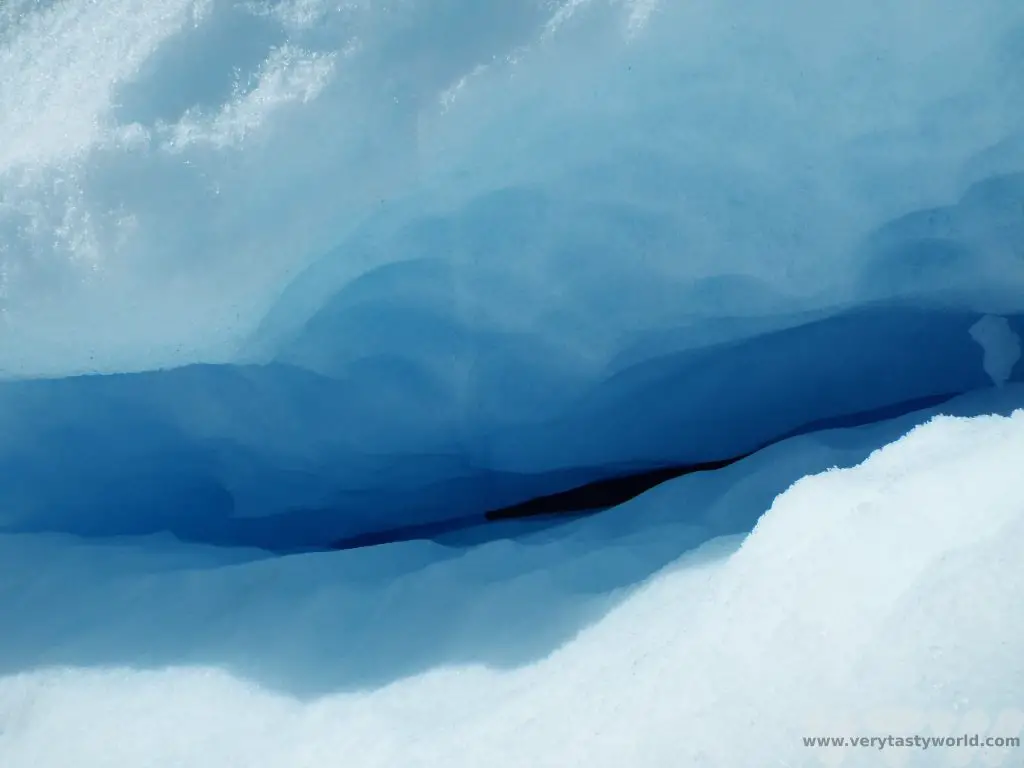
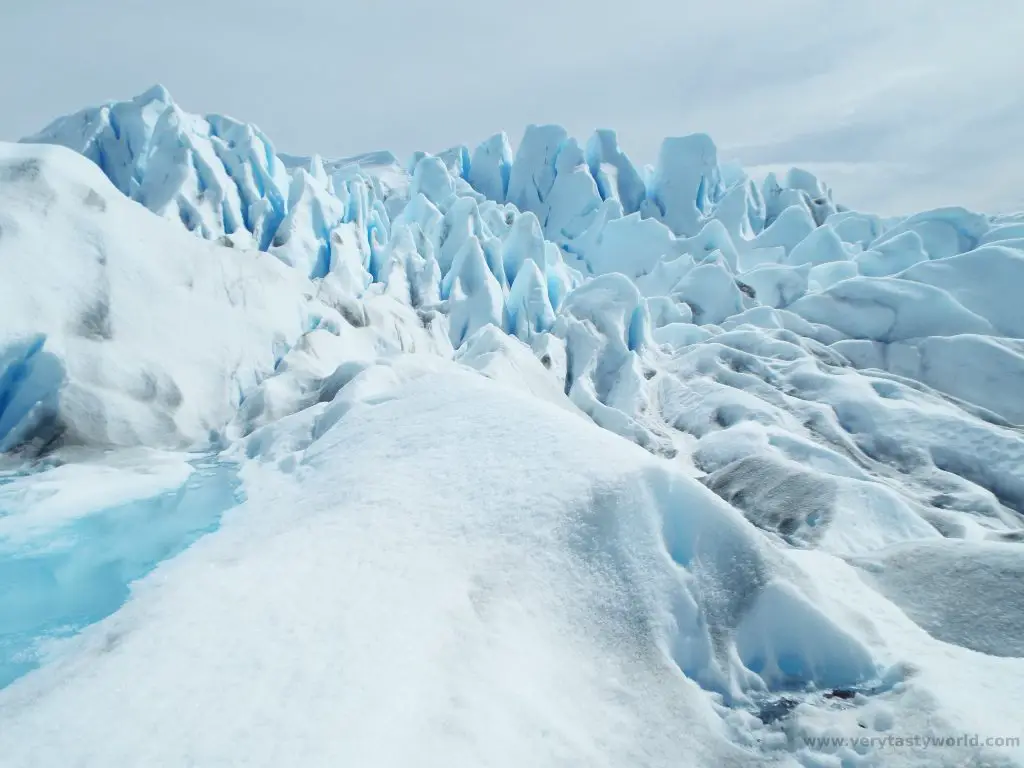
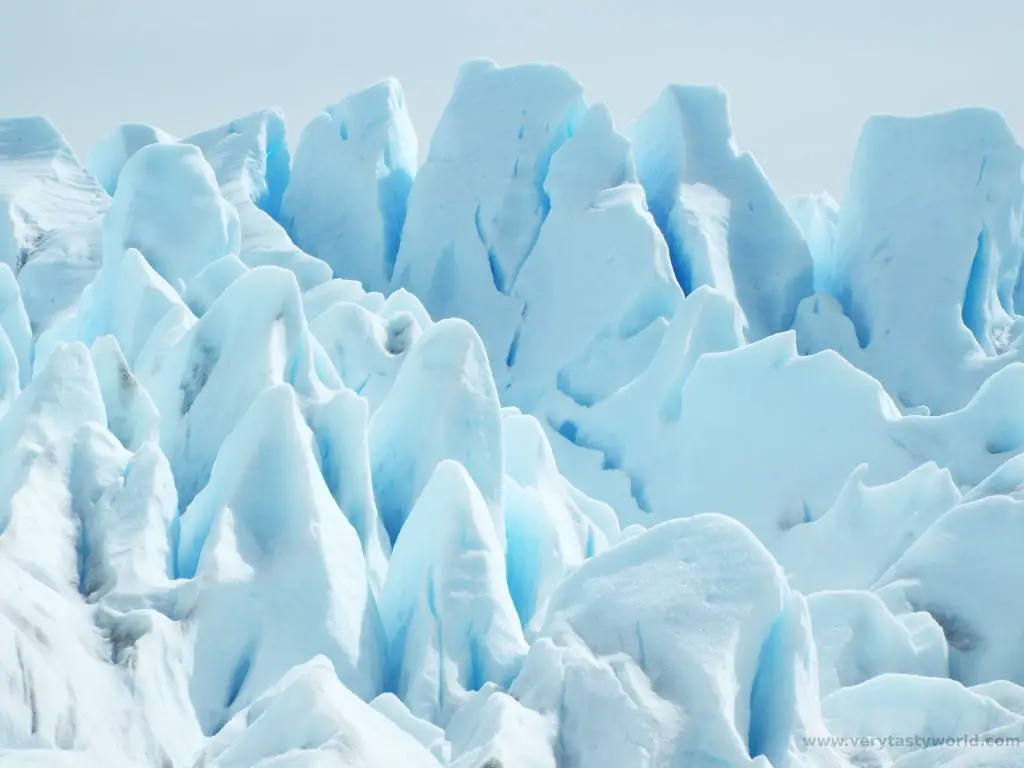
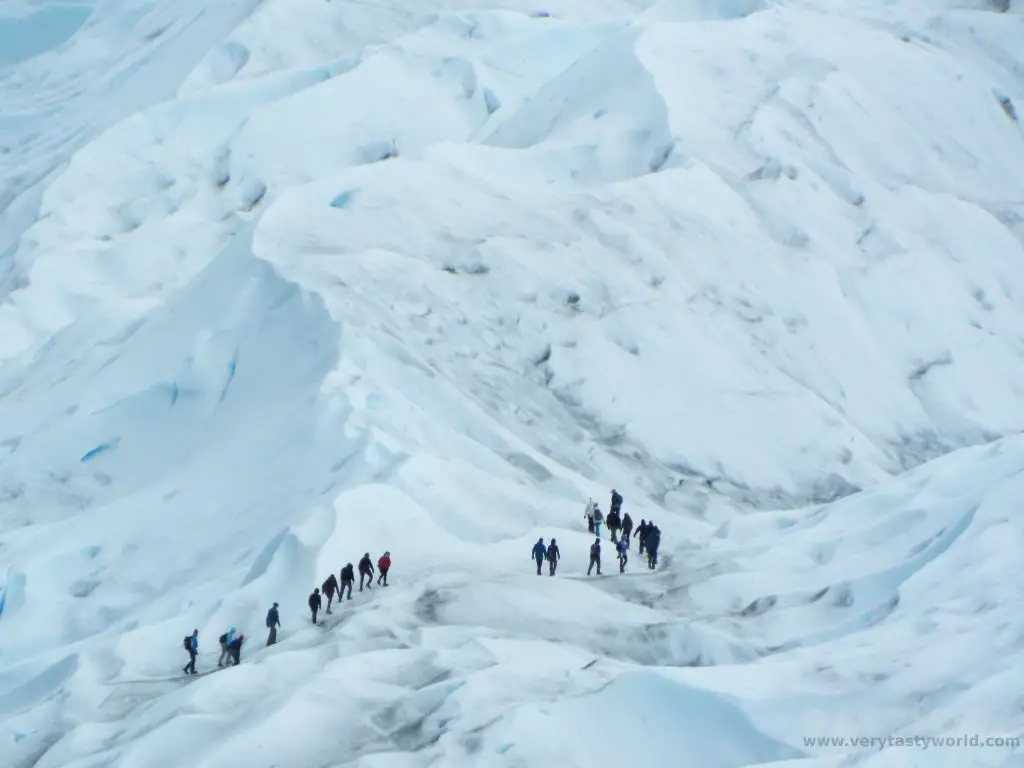
A Treat At The End Of The Trek
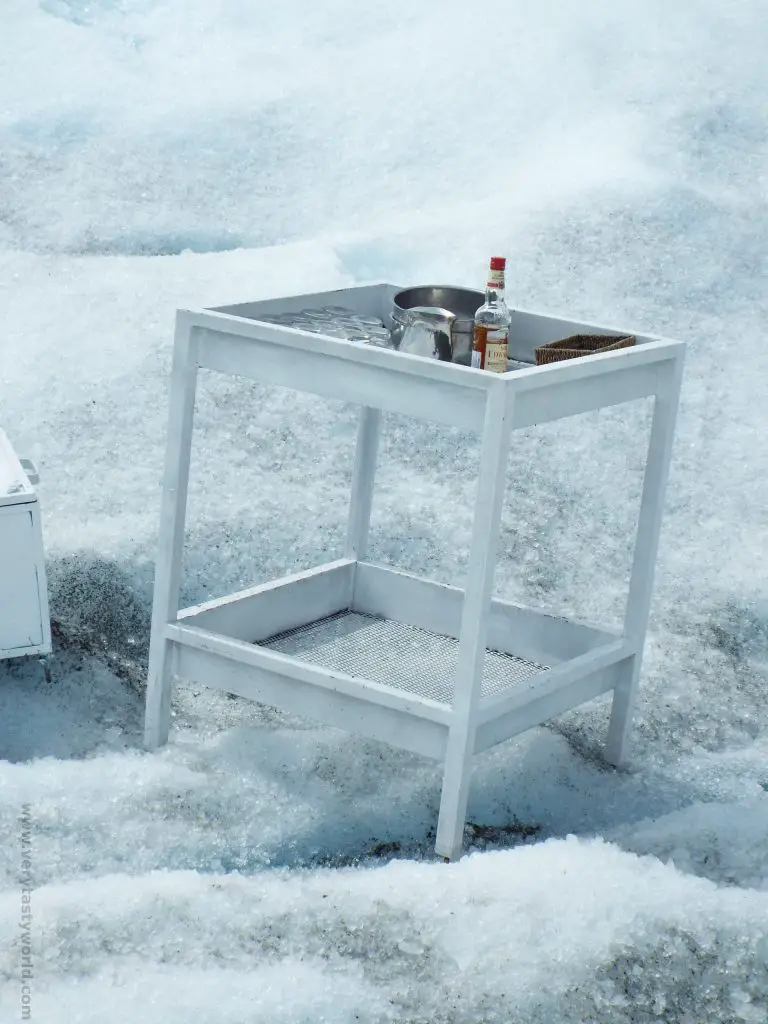
At the end of the trek there is a table, and on that table is a bottle.
Yes, the end of the trek offers a warming whiskey on the rocks, the rocks, of course, being large chunks of glacial ice.
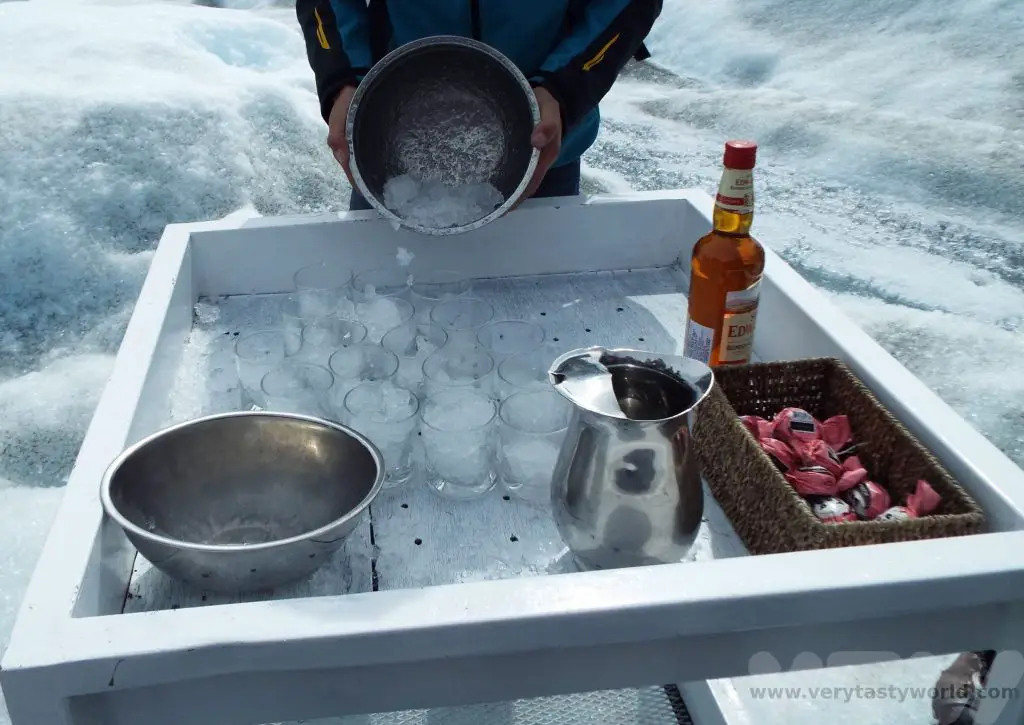
Fire and ice. Fortunately, it’s close to the edge of the glacier so you can stagger off in your crampons after enjoying a tipple.
Perito Moreno Glacier Tour – The Boardwalk
When visiting the Perito Moreno glacier there’s also a lovely walkway on the other side of the glacier to stroll along and see some amazing views. We took the ferry back to the other side and enjoyed walking along the boardwalk.

As the glacier advances, it cuts off part of the lake it moves across, effectively creating a dam. Over time, the water pressure causes this ice bridge to rupture and large parts of the glacier calve off.
The last rupture was in March 2022. It is difficult to predict when a rupture is going to happen as there isn’t a specific frequency, so you can’t really plan a trip around it. Apparently they are more likely to take place in winter but you have to get lucky to see one. There is plenty of video footage of past events available and it looks truly spectacular! (This photo was taken some months after the rupture in 2018.)
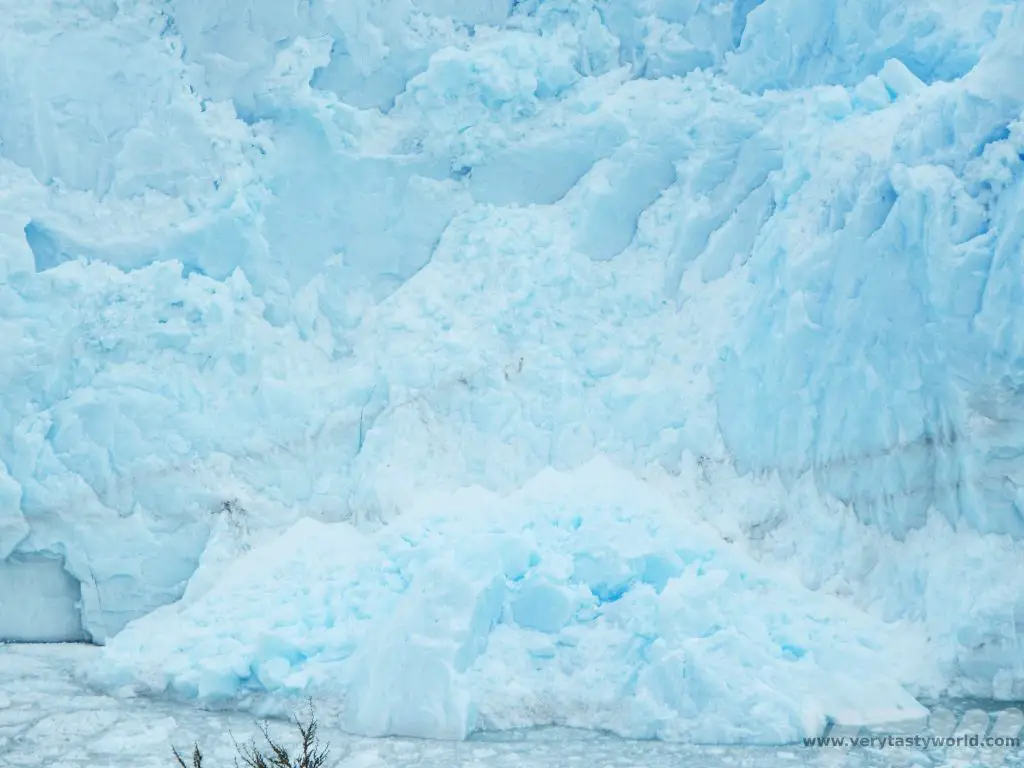
Even if you’re not around to see the rupture there are still likely to be opportunities to see chunks of glacier calve away from the main ice. You’ll see it first. A lump of ice will fall into the water. It looks pretty small from a distance but is probably a fairly large piece. Then you hear the noise – it’s a loud cracking sound, like a shotgun.
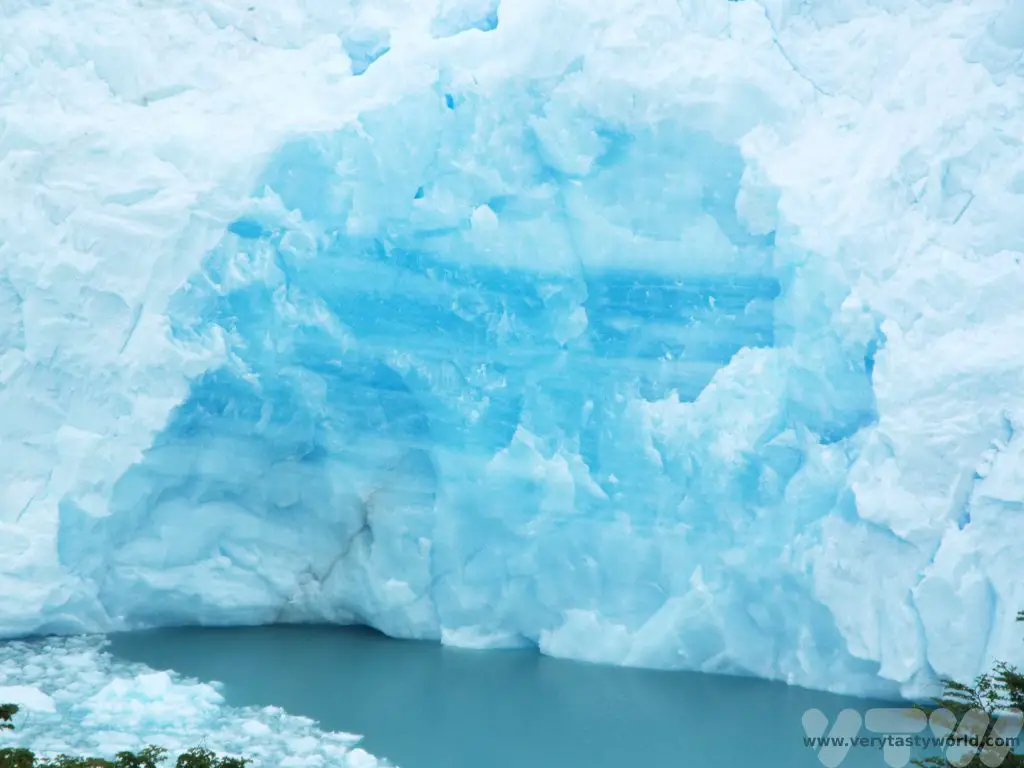
Our trip was a full day tour, so we took a packed lunch for scoffing immediately after our trek. It meant we could have more time to view the glacier from the walkway. However, there is a restaurant and other facilities at a visitor centre by the boardwalk area.
Get Your Guide offers a variety of tours to suit all levels of interest:
Related Posts You May Enjoy

- Best Time To Visit Machu Picchu 2024 Update
- A 2 Week Patagonia Itinerary
- Day of the Dead in Campeche
- A Galapagos Land Based Itinerary
- RECIPE: How to Make Costa Rica’s Gallo Pinto
- A Tasty Puebla Food Tour
- Costa Rica Wildlife Sanctuary – Caño Negro
- Visit Torres del Paine National Park in Patagonia
- Atacama Desert Itinerary
The House of Bols Amsterdam
Visit House of Bols in Amsterdam
In 1575 the Bols family set up a liquor distillery in Amsterdam.
You thought gin was British? Think again! Genever was the juniper flavoured liquor from which gin eventually evolved and is specific to the Netherlands. There are two types: oude (old) and jonge (young). Oude is an older process and distilled from malt, jonge is the later type and contains more grain, giving a lighter flavour rather than the richly developed flavours of the oude.
You can visit the House of Bols in Amsterdam which is a combination of a museum and drinking emporium. It’s just round the corner from the Rijksmuseum, one of the world’s greatest art galleries. Handy tips: Go to the Rijksmusem first and admire the amazing art, then nip, via the eminently Instagrammable IAmsterdam park, to the House of Bols. Admiring the art whilst a little bit squiffy might not be the best way to appreciate Rembrandt and the other Dutch Masters’ finest paintings.
Obviously you need to be over 18 to partake of any alcohol on offer but the museum element is also interesting.
There are a variety of experiences you can choose from. Our ticket gained entrance to the museum, a cocktail at the end of the tour and two shots of booze from the enormous selection on offer in the shiny mirror bar.
History of The House of Bols Amsterdam
The tour takes you on a journey through the history of the company.

You get to visit the flavour hall where you learn about how you taste and get to sample the multitude of flavours on offer. (Bear in mind that some of the flavour exercises you can try, given you are in Holland, may result in a liquorice-y taste sensation which really isn’t at all fun if you don’t like liquorice!)
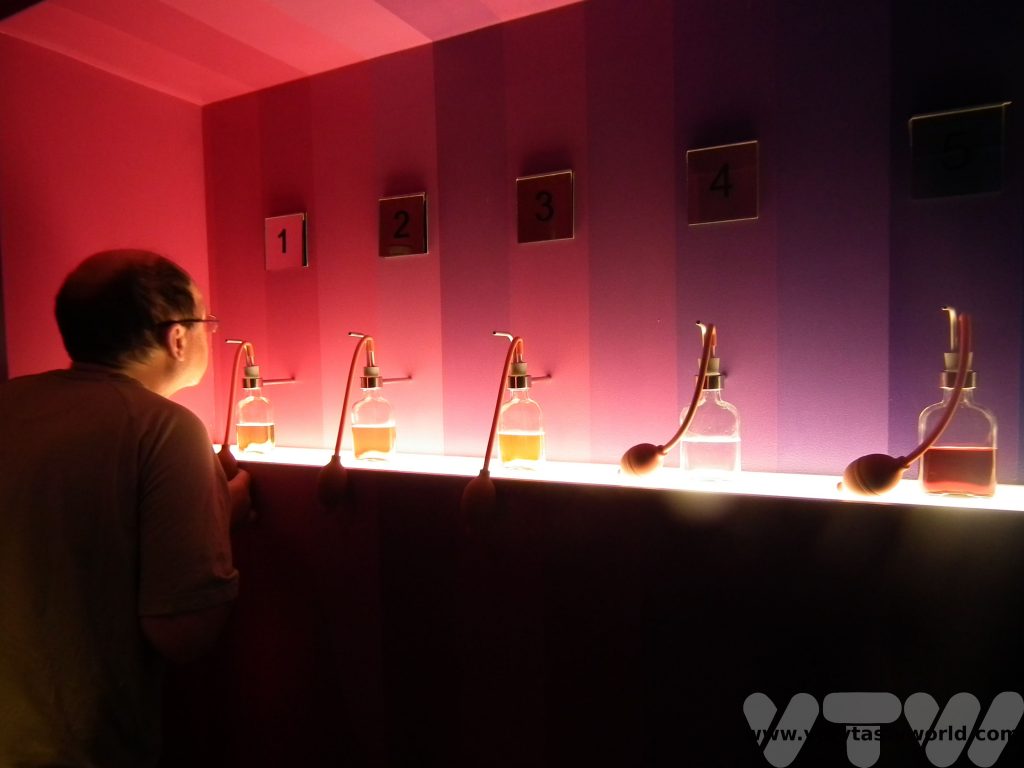
There is an amazing array of tastes to experience. Have a whiff then try to guess the flavour – the answer is given beneath the number on the wall.
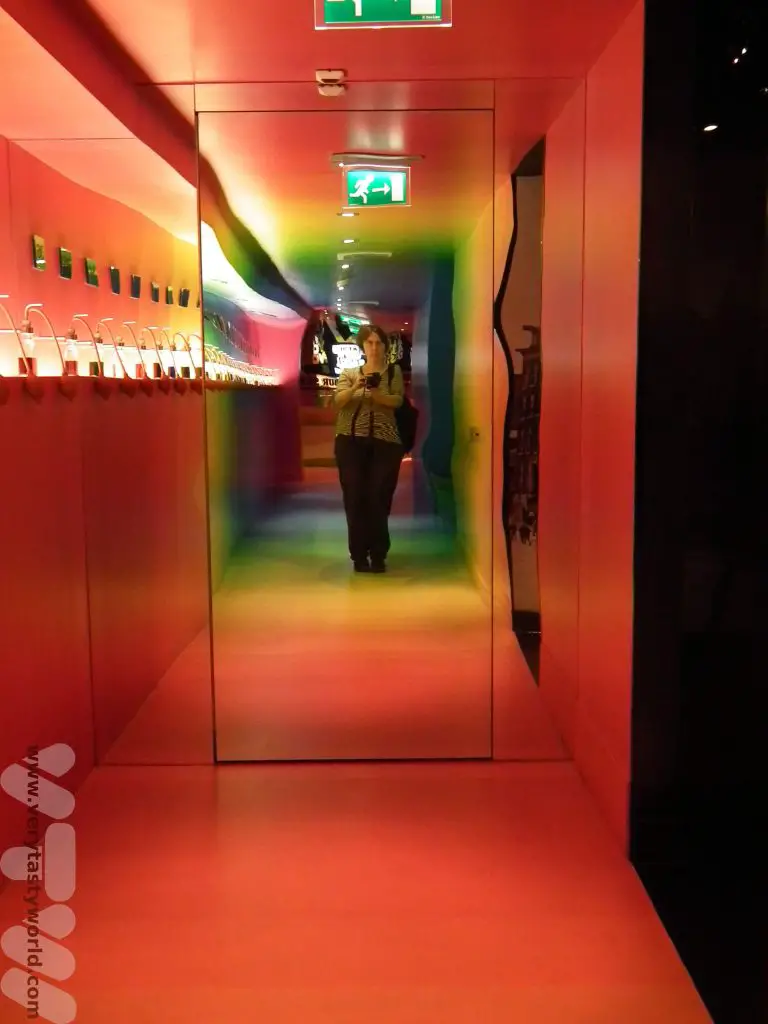
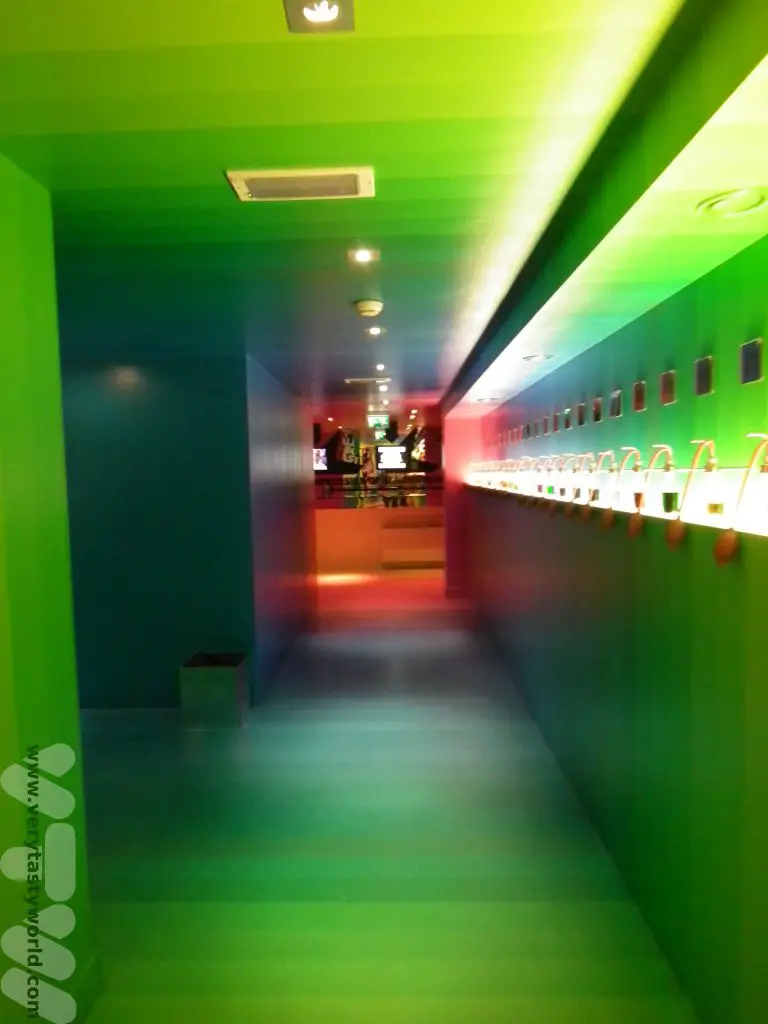
Then it’s onto the technicalities of how to make genever and the history of distilling. This way…

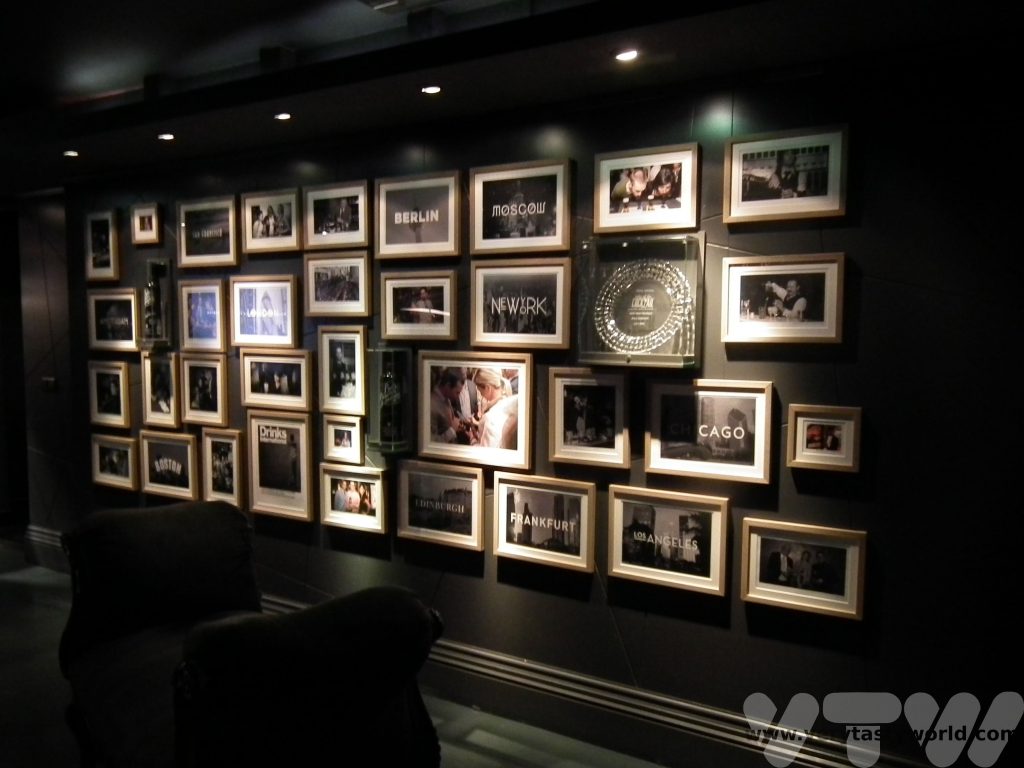
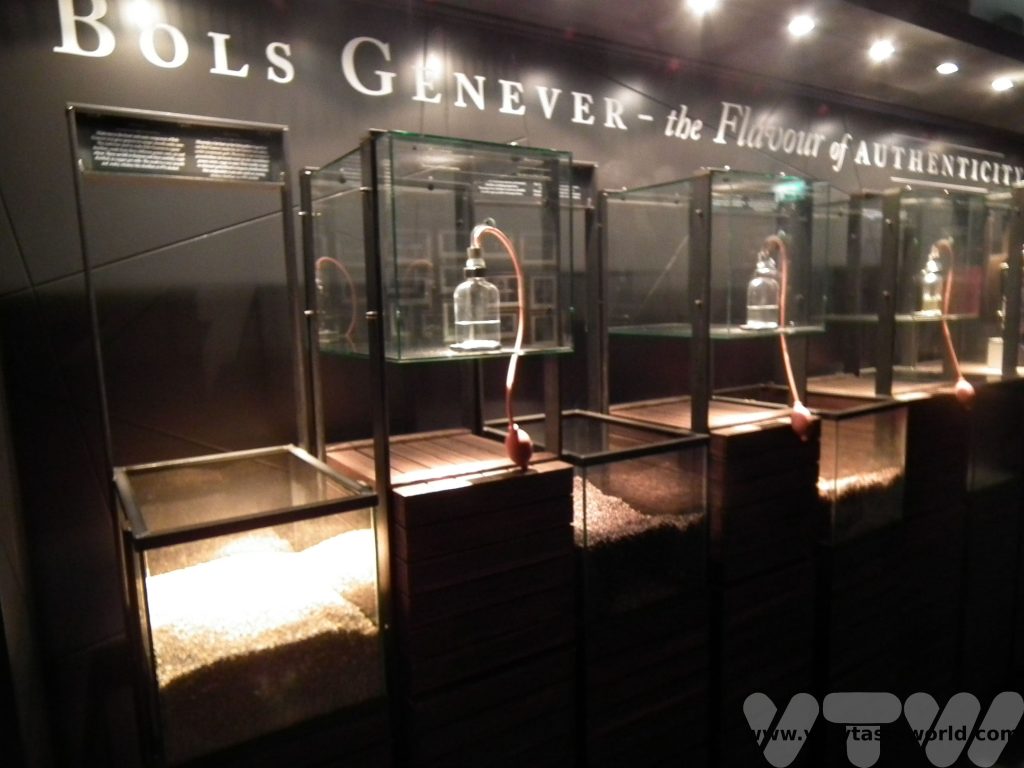
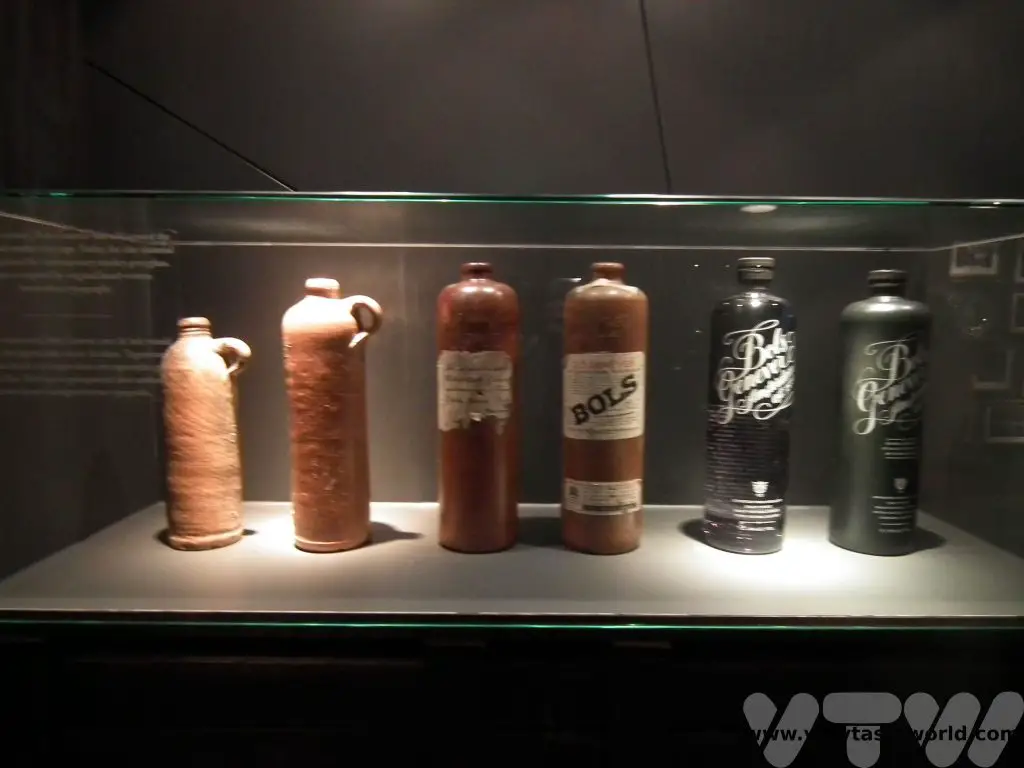
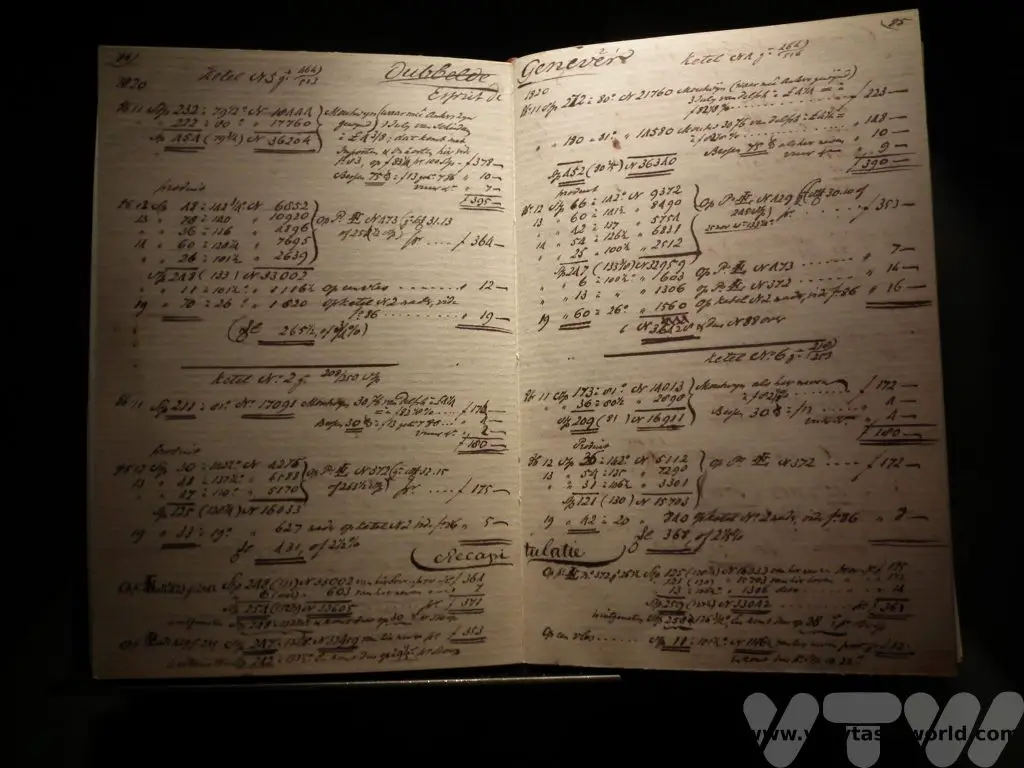
House of Bols Mirror Bar
And finally to the mirror bar.
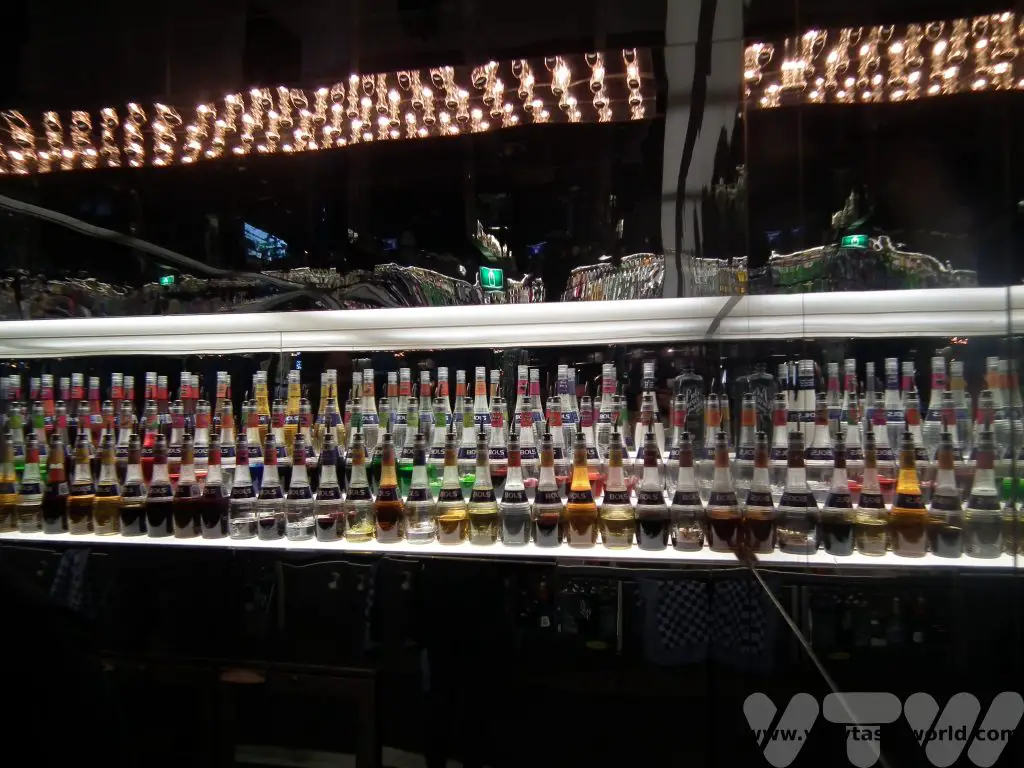
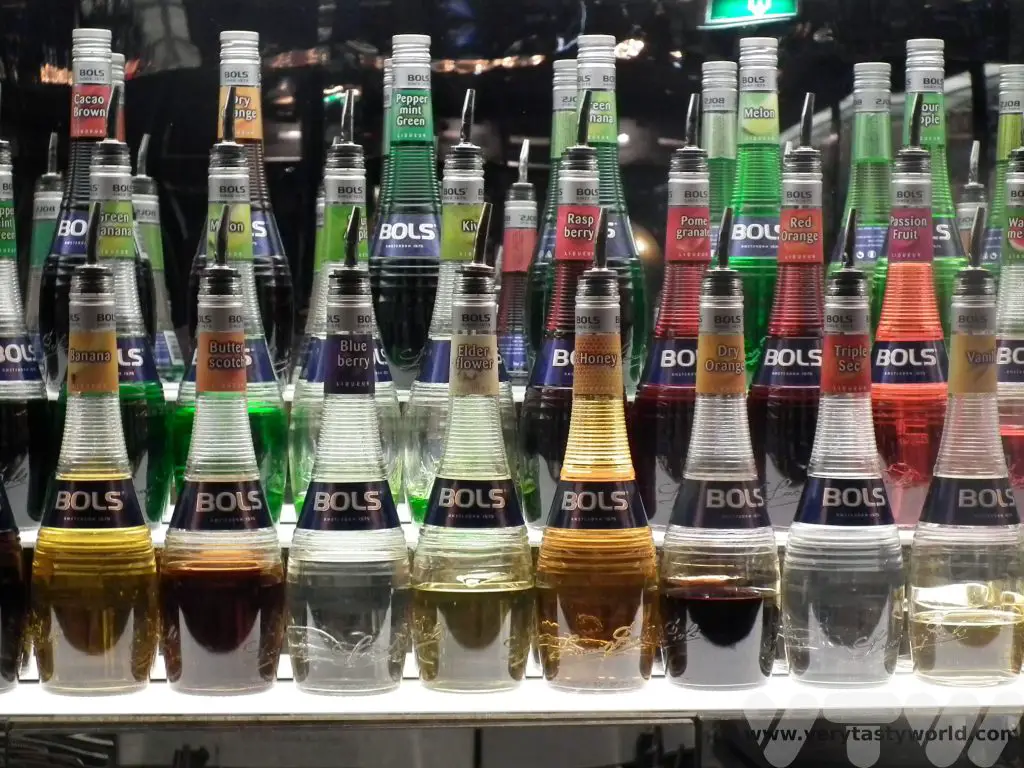
You can choose a cocktail using the electronic machines which help you determine your ideal cocktail via a series of options and then ask the bartender to make it for you. Best Cocktail Ever: The Bols Bloody Mary.
And this particular incarnation had (vegetarians look away now)… bacon! Bols vodka, tomato, lemon juice, spicy Tabasco heaven WITH ADDED BACON. Deep joy.
Our ticket allowed a further two shots from the magnificent selection. You could try to recall which flavours had tickled your nostrils in the house of flavour but we found that a more interesting alternative was to try the neat genever shots so that we could taste the difference between the different types. You can, for example, compare an oude genever and jonge genever. Jonge is a clearer gin, more akin to vodka, whereas oude has a maltier taste with a complexity of flavour you might associate with whisky. Both hugely enjoyable though.
Sorry that the following photo is slightly out of focus but we were mildly sozzled when we took the shot of the shots…
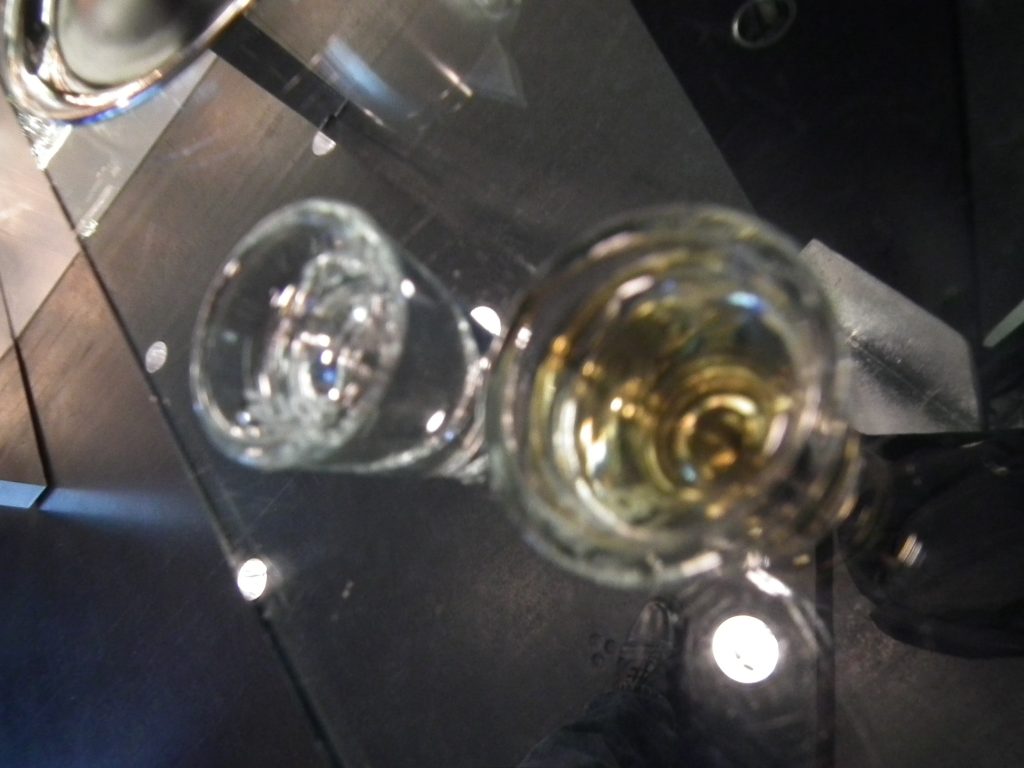
There are a number of different tours available for the House of Bols, including cocktail making experiences.
If you’re interested in other cocktail recipes they can be found here:

